Sale
The Integrity of 2 Corinthians and Paul’s Aggravating Absence
Published: Sep 2015
Original price was: £60.00.£22.50Current price is: £22.50.
Is 2 Corinthians a single letter, or a composite of fragments? Does it have a single setting, or do its parts address successive stages in a developing crisis? This is perennial set of questions about this Pauline letter.
In this provocative study, Christopher D. Land steps back from the details that dominate most discussions of integrity. He analyses 2 Corinthians using a theoretically motivated procedure, avoiding the cherry-picking that plagues so many language-related arguments. Then, drawing upon this analysis, he segments 2 Corinthians into five parts. Examining the sorts of meanings employed in each segment, Land asks what is being talked about, what is being done, and who is taking part.
He distinguishes between the settings in which texts are produced and the situations construed by their language, and he affirms both the conventional nature of intra-textual variation and the principle that coherent texts construe coherent situations. In the end, Land argues that 2 Corinthians has the general appearance of being a single text, and that its specifics ought to be re-examined accordingly.
Irrespective of linguistics and literary integrity, scholars of all persuasions will be interested in the specifics. Among other things, Land argues that there is no single 'offender' underlying Paul's remarks in chaps. 2 and 7, but a plurality of misbehaving church members. Paul has been accused of holding the church responsible for problems caused by his prolonged absence; and other Christian missionaries are stoking the church's discontent, criticizing Paul's ineffectual leadership and advancing their own as superior. To confront this crisis, Paul must simultaneously placate his readers, reiterate his demand that they care for themselves in his absence, and persuade them not to abandon him for 'stronger' leadership.
Sale
The Integrity of 2 Corinthians and Paul’s Aggravating Absence
Original price was: £60.00.£22.50Current price is: £22.50.
Is 2 Corinthians a single letter, or a composite of fragments? Does it have a single setting, or do its parts address successive stages in a developing crisis? This is perennial set of questions about this Pauline letter.
In this provocative study, Christopher D. Land steps back from the details that dominate most discussions of integrity. He analyses 2 Corinthians using a theoretically motivated procedure, avoiding the cherry-picking that plagues so many language-related arguments. Then, drawing upon this analysis, he segments 2 Corinthians into five parts. Examining the sorts of meanings employed in each segment, Land asks what is being talked about, what is being done, and who is taking part.
He distinguishes between the settings in which texts are produced and the situations construed by their language, and he affirms both the conventional nature of intra-textual variation and the principle that coherent texts construe coherent situations. In the end, Land argues that 2 Corinthians has the general appearance of being a single text, and that its specifics ought to be re-examined accordingly.
Irrespective of linguistics and literary integrity, scholars of all persuasions will be interested in the specifics. Among other things, Land argues that there is no single 'offender' underlying Paul's remarks in chaps. 2 and 7, but a plurality of misbehaving church members. Paul has been accused of holding the church responsible for problems caused by his prolonged absence; and other Christian missionaries are stoking the church's discontent, criticizing Paul's ineffectual leadership and advancing their own as superior. To confront this crisis, Paul must simultaneously placate his readers, reiterate his demand that they care for themselves in his absence, and persuade them not to abandon him for 'stronger' leadership.
Sale
‘For She Has Heard’: The Standing Stone in Joshua 24 and the Development of a Covenant Symbol
Published: Aug 2015
Original price was: £50.00.£20.00Current price is: £20.00.
In this unusual and fascinating study, Elizabeth Berne DeGear draws on both biblical studies and psychoanalytic theory to interpret the role of the standing stone erected by Joshua in the sanctuary at Shechem.
The presence of a listening stone in the sanctuary distinguishes the ritual space in Joshua 24, yet this religious symbol has received little scholarly attention. DeGear begins with the question: What is this numinous feminine presence serving as witness to the people's covenantal relationship with their God? Comparing this stone's function with the function of other covenant stones in the Hebrew Bible and throughout the ancient Near East, DeGear illuminates both the power of the symbol and its dynamics in the people's religious development.
In psychoanalytic mode, DeGear goes on to show how humans create and use symbols differently at various positions along the path to maturity. Her study presents a new perspective on how covenant symbols in the Hebrew Bible function in the development of the communities using them. The present analysis of this one biblical symbol offers scholars and students of biblical and religious studies the tools to engage in psychologically informed consideration of covenant.
With its focus on sanctuary, symbol and psyche, DeGear's exploration of the stone extends from the world of ancient Israel to today's worship communities, where the Bible itself is used as a covenant symbol. What emerges is a picture of how the standing stone and other mediating symbols function in the religion of communities in the Bible and beyond.
Sale
‘For She Has Heard’: The Standing Stone in Joshua 24 and the Development of a Covenant Symbol
Original price was: £50.00.£20.00Current price is: £20.00.
In this unusual and fascinating study, Elizabeth Berne DeGear draws on both biblical studies and psychoanalytic theory to interpret the role of the standing stone erected by Joshua in the sanctuary at Shechem.
The presence of a listening stone in the sanctuary distinguishes the ritual space in Joshua 24, yet this religious symbol has received little scholarly attention. DeGear begins with the question: What is this numinous feminine presence serving as witness to the people's covenantal relationship with their God? Comparing this stone's function with the function of other covenant stones in the Hebrew Bible and throughout the ancient Near East, DeGear illuminates both the power of the symbol and its dynamics in the people's religious development.
In psychoanalytic mode, DeGear goes on to show how humans create and use symbols differently at various positions along the path to maturity. Her study presents a new perspective on how covenant symbols in the Hebrew Bible function in the development of the communities using them. The present analysis of this one biblical symbol offers scholars and students of biblical and religious studies the tools to engage in psychologically informed consideration of covenant.
With its focus on sanctuary, symbol and psyche, DeGear's exploration of the stone extends from the world of ancient Israel to today's worship communities, where the Bible itself is used as a covenant symbol. What emerges is a picture of how the standing stone and other mediating symbols function in the religion of communities in the Bible and beyond.
Sale
Imagination, Ideology and Inspiration: Echoes of Brueggemann in a New Generation
Published: Aug 2015
Original price was: £60.00.£20.00Current price is: £20.00.
By any account, Walter Brueggemann stands as one of the foremost interpreters of the Hebrew Bible of the past half-century. Yet the question remains of what his influence will be on the next generation of biblical scholars, who have learned from Brueggemann and taken his work in new and often surprising directions. This volume engages that question by presenting the work of fourteen of Brueggemann's former students at Columbia Theological Seminary (Decatur, Georgia) who are now biblical scholars in their own right, asking how his influence has been received and transformed by them.
Essays in this volume present imaginative new readings of well-known texts, from the crisis of God in Genesis 22 to God's birthing body in Job 38. They engage the ideology of the text, discovering the voice of a female prophet in the book of Isaiah, a Job in drag, and a feminist Qohelet. They grapple with the implications of the text for contemporary life, from reading Lamentations after Hiroshima to considering how the production of Bibles is an act of ideological control. While clearly resonating with Brueggemann's work, these essays also take his influence in new directions, from deeper engagement with rabbinic interpretation to the incorporation of new theoretical perspectives from Lacan to Žižek to Deleuze and Guattari.
An introduction by Brent Strawn considers Brueggemann's influence in the field more generally, while a response from Carolyn Sharp offers soundings for a new generation of scholars.
Sale
Imagination, Ideology and Inspiration: Echoes of Brueggemann in a New Generation
Original price was: £60.00.£20.00Current price is: £20.00.
By any account, Walter Brueggemann stands as one of the foremost interpreters of the Hebrew Bible of the past half-century. Yet the question remains of what his influence will be on the next generation of biblical scholars, who have learned from Brueggemann and taken his work in new and often surprising directions. This volume engages that question by presenting the work of fourteen of Brueggemann's former students at Columbia Theological Seminary (Decatur, Georgia) who are now biblical scholars in their own right, asking how his influence has been received and transformed by them.
Essays in this volume present imaginative new readings of well-known texts, from the crisis of God in Genesis 22 to God's birthing body in Job 38. They engage the ideology of the text, discovering the voice of a female prophet in the book of Isaiah, a Job in drag, and a feminist Qohelet. They grapple with the implications of the text for contemporary life, from reading Lamentations after Hiroshima to considering how the production of Bibles is an act of ideological control. While clearly resonating with Brueggemann's work, these essays also take his influence in new directions, from deeper engagement with rabbinic interpretation to the incorporation of new theoretical perspectives from Lacan to Žižek to Deleuze and Guattari.
An introduction by Brent Strawn considers Brueggemann's influence in the field more generally, while a response from Carolyn Sharp offers soundings for a new generation of scholars.
Sale
Adam, Eve, and the Devil: A New Beginning, Second Enlarged Edition
Published: Aug 2015
Price range: £18.50 through £27.00
In this book the authors develop an intriguing theory about the Canaanite origin of the biblical traditions concerning the origin of the cosmos and the creation of humankind. Adam, Eve, and the Devil tells a new story about human beginnings and at the same time proposes a fresh start for biblical research into primordial traditions.
A number of clay tablets from Ugarit, dating from the late thirteenth century BCE, throw new light, Korpel and de Moor argue, on the background of the first chapters of Genesis and the myth of Adam. In these tablets, El, the creator deity, and his wife Asherah lived in a vineyard or garden on the slopes of Mt Ararat, known in the Bible as the mountain where Noah's ark came to rest. The first sinner was not a human being, but an evil god called Horon who wanted to depose El. Horon was thrown down from the mountain of the gods, and in revenge he transformed the Tree of Life in the garden into a Tree of Death and enveloped the whole world in a poisonous fog. Adam was sent down to restore life on earth, but failed because Horon in the form of a huge serpent bit him. As a result Adam and his wife lost their immortality.
This myth found its way into the Bible, the Apocrypha and the Pseudepigraphical literature, though it was often transformed or treated critically. Adam, Eve, and the Devil traces the reception of the myth in its many forms, and also presents the oldest pictures of Adam and Eve ever identified (one of them on the front cover of the book). A second, enlarged edition is published in paperback in August, 2015.
Sale
Adam, Eve, and the Devil: A New Beginning, Second Enlarged Edition
Price range: £18.50 through £27.00
In this book the authors develop an intriguing theory about the Canaanite origin of the biblical traditions concerning the origin of the cosmos and the creation of humankind. Adam, Eve, and the Devil tells a new story about human beginnings and at the same time proposes a fresh start for biblical research into primordial traditions.
A number of clay tablets from Ugarit, dating from the late thirteenth century BCE, throw new light, Korpel and de Moor argue, on the background of the first chapters of Genesis and the myth of Adam. In these tablets, El, the creator deity, and his wife Asherah lived in a vineyard or garden on the slopes of Mt Ararat, known in the Bible as the mountain where Noah's ark came to rest. The first sinner was not a human being, but an evil god called Horon who wanted to depose El. Horon was thrown down from the mountain of the gods, and in revenge he transformed the Tree of Life in the garden into a Tree of Death and enveloped the whole world in a poisonous fog. Adam was sent down to restore life on earth, but failed because Horon in the form of a huge serpent bit him. As a result Adam and his wife lost their immortality.
This myth found its way into the Bible, the Apocrypha and the Pseudepigraphical literature, though it was often transformed or treated critically. Adam, Eve, and the Devil traces the reception of the myth in its many forms, and also presents the oldest pictures of Adam and Eve ever identified (one of them on the front cover of the book). A second, enlarged edition is published in paperback in August, 2015.
Sale
Journal of Greco-Roman Christianity and Judaism 10 (2014)
Published: July 2015
Original price was: £80.00.£20.00Current price is: £20.00.
This is the tenth volume of the hard-copy edition of a journal that has been published online (www.jgrchj.net) since 2000. Volume 1 was for 2000, Volume 2 was for 2001 —2005, Volume 3 was for 2006, Volume 4 was for 2007, Volume 5 was for 2008, Volume 6 was for 2009, Volume 7 was for 2010, Volume 8 was for 2011 —2012, Volume 9 was for 2013 and Volume 10 is for 2014. As they appear, the hard-copy editions will replace the online materials. The scope of JGRChJ is the texts, language and cultures of the Greco-Roman world of early Christianity and Judaism. The papers published in JGRChJ are designed to pay special attention to the 'larger picture' of politics, culture, religion and language, engaging as well with modern theoretical approaches.
Sale
Journal of Greco-Roman Christianity and Judaism 10 (2014)
Original price was: £80.00.£20.00Current price is: £20.00.
This is the tenth volume of the hard-copy edition of a journal that has been published online (www.jgrchj.net) since 2000. Volume 1 was for 2000, Volume 2 was for 2001 —2005, Volume 3 was for 2006, Volume 4 was for 2007, Volume 5 was for 2008, Volume 6 was for 2009, Volume 7 was for 2010, Volume 8 was for 2011 —2012, Volume 9 was for 2013 and Volume 10 is for 2014. As they appear, the hard-copy editions will replace the online materials. The scope of JGRChJ is the texts, language and cultures of the Greco-Roman world of early Christianity and Judaism. The papers published in JGRChJ are designed to pay special attention to the 'larger picture' of politics, culture, religion and language, engaging as well with modern theoretical approaches.
Sale
Religion and Violence: The Biblical Heritage
Published: Jun 2015
Price range: £12.50 through £16.00
Violence that is motivated by--and justified by--religious ideas, authorities and texts is everywhere around us. Some say that the origins of religion and human violence are inherently connected, and that the explanation for religious violence lies at the heart of the religious imagination itself, others that human violence was there long before religion ever came about, being no more than an unfortunate by-product of human evolution. Reconsidering the question of religion and violence in the biblical heritage is a narrower--but nonetheless essential--endeavour, to which the present volume addresses itself.
After an introductory chapter by the editors on religion, violence and the Bible, Ziony Zevit writes on violence in Israelite culture and in the Bible, Tamar Kamionkowski on violence in prophetic literature, Stephen Geller on the prophetic roots of religious violence, David Wright on homicide, talion and vengeance in the Covenant Code, Lawrence Wills on the death of the hero and the violent death of Jesus, Jennifer Wright Knust on sacrifice and sacred text in Justin, and David Frankfurter on vengeance fantasies in the New Testament. Stephen Marini offers concluding reflections on religion and violence under the rubric of conflict, subversion and sacrifice.
Sale
Religion and Violence: The Biblical Heritage
Price range: £12.50 through £16.00
Violence that is motivated by--and justified by--religious ideas, authorities and texts is everywhere around us. Some say that the origins of religion and human violence are inherently connected, and that the explanation for religious violence lies at the heart of the religious imagination itself, others that human violence was there long before religion ever came about, being no more than an unfortunate by-product of human evolution. Reconsidering the question of religion and violence in the biblical heritage is a narrower--but nonetheless essential--endeavour, to which the present volume addresses itself.
After an introductory chapter by the editors on religion, violence and the Bible, Ziony Zevit writes on violence in Israelite culture and in the Bible, Tamar Kamionkowski on violence in prophetic literature, Stephen Geller on the prophetic roots of religious violence, David Wright on homicide, talion and vengeance in the Covenant Code, Lawrence Wills on the death of the hero and the violent death of Jesus, Jennifer Wright Knust on sacrifice and sacred text in Justin, and David Frankfurter on vengeance fantasies in the New Testament. Stephen Marini offers concluding reflections on religion and violence under the rubric of conflict, subversion and sacrifice.
Sale
Sin, Impurity, Sacrifice, Atonement: The Priestly Conceptions
Published: May 2015
Price range: £15.00 through £20.00
The goal of this closely reasoned study is to explain why, in Priestly texts of the Hebrew Bible, the verb kipper, traditionally translated 'atone', means the way of dealing both with sin and with impurity —which might seem very different things.
Sklar's first key conclusion is that when the context is sin, certain sins also pollute; so 'atonement' may include some element of purification. His second conclusion is that, when the context is impurity, and kipper means not 'atone' but 'effect purgation', impurity also endangers; so kipper can include some element of ransoming.
In fact, sin and impurity, while distinct categories in themselves, have this in common: each of them requires both ransoming and purification. It is for this reason that kipper can be used in both settings.
This benchmark study concludes with a careful examination of the famous sentence of Leviticus 17.11 that 'blood makes atonement' (kipper) and explains how, in the Priestly ideology, blood sacrifice was able to accomplish both ransom and purification.
Sale
Sin, Impurity, Sacrifice, Atonement: The Priestly Conceptions
Price range: £15.00 through £20.00
The goal of this closely reasoned study is to explain why, in Priestly texts of the Hebrew Bible, the verb kipper, traditionally translated 'atone', means the way of dealing both with sin and with impurity —which might seem very different things.
Sklar's first key conclusion is that when the context is sin, certain sins also pollute; so 'atonement' may include some element of purification. His second conclusion is that, when the context is impurity, and kipper means not 'atone' but 'effect purgation', impurity also endangers; so kipper can include some element of ransoming.
In fact, sin and impurity, while distinct categories in themselves, have this in common: each of them requires both ransoming and purification. It is for this reason that kipper can be used in both settings.
This benchmark study concludes with a careful examination of the famous sentence of Leviticus 17.11 that 'blood makes atonement' (kipper) and explains how, in the Priestly ideology, blood sacrifice was able to accomplish both ransom and purification.
Sale
Borges and the Bible
Published: May 2015
Original price was: £50.00.£19.50Current price is: £19.50.
Jorge Luis Borges is the darling of authors and critics who were once described as postmodern. Borges's fictions assail the boundaries between text, world and self. In one sense, the fictions are mere rhetorical games, puzzles, or 'tricks', which disrupt communication (and interpretation), but they also suggest —at least to some —metaphysical uncertainties. To read them is as if one read the fictions of Hume or the Buddha.
Most of the literary and biblical scholars in this volume pair the Bible and its scholarship with one or more of Borges's short fictions (particularly those first collected in English in Ficciones ), but some venture into Borges's essays, poetry, and his life story (as he and others have told it). As to Bibles, some essayists focus on particular texts from the Hebrew Bible (like Genesis, Samuel, Kings or Job) or the Christian New Testament (like Mark, 2 Corinthians, or Revelation), while others engage traditions of interpretation like Gnosticism, the Kabbalah or academic biblical scholarship. Several focus on canon, translation, the craft of fiction, religion or hermeneutics as a way of thinking about Borges and the Bible.
With Borges, interpretation is ubiquitous. Whether consciously fictionalizing or not, all (biblical) interpretation transforms its precursor. All (biblical) interpretation becomes a play with secrecy and revelation. Borgesian Bibles and scholarship are labyrinths, gardens of forking paths, unsettling and distorting mirrors. With Borges, biblical scholars come face to face with their finitude, obsession, fascination, ambivalence, and inevitable heresy vis-à-vis ta biblia.
Sale
Borges and the Bible
Original price was: £50.00.£19.50Current price is: £19.50.
Jorge Luis Borges is the darling of authors and critics who were once described as postmodern. Borges's fictions assail the boundaries between text, world and self. In one sense, the fictions are mere rhetorical games, puzzles, or 'tricks', which disrupt communication (and interpretation), but they also suggest —at least to some —metaphysical uncertainties. To read them is as if one read the fictions of Hume or the Buddha.
Most of the literary and biblical scholars in this volume pair the Bible and its scholarship with one or more of Borges's short fictions (particularly those first collected in English in Ficciones ), but some venture into Borges's essays, poetry, and his life story (as he and others have told it). As to Bibles, some essayists focus on particular texts from the Hebrew Bible (like Genesis, Samuel, Kings or Job) or the Christian New Testament (like Mark, 2 Corinthians, or Revelation), while others engage traditions of interpretation like Gnosticism, the Kabbalah or academic biblical scholarship. Several focus on canon, translation, the craft of fiction, religion or hermeneutics as a way of thinking about Borges and the Bible.
With Borges, interpretation is ubiquitous. Whether consciously fictionalizing or not, all (biblical) interpretation transforms its precursor. All (biblical) interpretation becomes a play with secrecy and revelation. Borgesian Bibles and scholarship are labyrinths, gardens of forking paths, unsettling and distorting mirrors. With Borges, biblical scholars come face to face with their finitude, obsession, fascination, ambivalence, and inevitable heresy vis-à-vis ta biblia.
Sale
Trauma Begets Genealogy: Gender and Memory in Chronicles
Published: Apr 2015
Original price was: £60.00.£20.00Current price is: £20.00.
Establishing a connection to the past while at the same time releasing us into the present is crucial to recalling a traumatic past. Tapping into the Book of Chronicles' genealogies as a memory space, Trauma Begets Genealogy facilitates the transformation of the act of looking back into a key for the present. Using a gender studies perspective, it combines a nuanced analysis of the gendered references in 1 Chronicles 1 —9 with an interdisciplinary approach that conceptualizes genealogies as memory performances and investigates them in diverse media.
The genealogies of Chronicles are here read by Ingeborg Löwisch alongside the post-Holocaust documentary My Life Part 2, in which Berlin film-maker Angelika Levi performs her 'gynealogy' at the intersection of her family archive and of discourses that belong to public memory. While Löwisch's close reading of the gendered fragments in Chronicles attest to fissures in the patrilinear succession, the parallel perception of the film deepens our understanding of gendered genealogies in response to trauma by contributing a full female lineage.
The resulting reassessment of an obscure set of biblical texts leads into the heart of the genealogical tissue and its fascinating ability to respond to a fractured past. This is the eighth volume of the Amsterdam Studies in the Bible and Religion (ed. Athalya Brenner), a sub-series of the Bible in the Modern World and of Hebrew Bible Monographs.
Sale
Trauma Begets Genealogy: Gender and Memory in Chronicles
Original price was: £60.00.£20.00Current price is: £20.00.
Establishing a connection to the past while at the same time releasing us into the present is crucial to recalling a traumatic past. Tapping into the Book of Chronicles' genealogies as a memory space, Trauma Begets Genealogy facilitates the transformation of the act of looking back into a key for the present. Using a gender studies perspective, it combines a nuanced analysis of the gendered references in 1 Chronicles 1 —9 with an interdisciplinary approach that conceptualizes genealogies as memory performances and investigates them in diverse media.
The genealogies of Chronicles are here read by Ingeborg Löwisch alongside the post-Holocaust documentary My Life Part 2, in which Berlin film-maker Angelika Levi performs her 'gynealogy' at the intersection of her family archive and of discourses that belong to public memory. While Löwisch's close reading of the gendered fragments in Chronicles attest to fissures in the patrilinear succession, the parallel perception of the film deepens our understanding of gendered genealogies in response to trauma by contributing a full female lineage.
The resulting reassessment of an obscure set of biblical texts leads into the heart of the genealogical tissue and its fascinating ability to respond to a fractured past. This is the eighth volume of the Amsterdam Studies in the Bible and Religion (ed. Athalya Brenner), a sub-series of the Bible in the Modern World and of Hebrew Bible Monographs.
Sale
Interpreting the Text: Essays on the Old Testament, its Reception and its Study, edited by Walter J. Houston and Adrian H.W. Curtis
Published: Apr 2015
Original price was: £60.00.£20.00Current price is: £20.00.
Roger Tomes (1928 —2011) was a well-known British scholar of the Old Testament, wide-ranging in his interests and meticulous in his scholarship. He was particularly productive after his retirement from his post at Northern College, Manchester, an interdenominational college for ministry training and theological study, and remained an Honorary Research Fellow at the University of Manchester.
He excelled in the conference paper or journal article form, but made no collection of his papers in his lifetime. Two of his Manchester colleagues have here made a selection from both his published essays and his unpublished papers, many of them delivered in the last few years to the Ehrhardt Seminar for biblical research in Manchester. Tomes was always concerned with the relevance of the Bible to the life of the Church, and the earliest essay in the volume, from 1969, is a contribution to the theology of the Old Testament. Others deal with the reception of biblical criticism in theological education in the nineteenth and early twentieth centuries. One of Tomes's abiding concerns was with Jewish —Christian relations; his interests in Jewish interpretation are reflected here in a study of the rabbinic use of the book of Jeremiah, and an essay on the Jewish American poet Emma Lazarus. He was working on the reception history of the story of David at the time of his death, and the fruits of that study are included in the form of two fascinating essays. Besides all this, the book covers a range of topics in the study of the Old Testament, including the deutero-canonical writings, its law and historical writings in particular.
Sale
Interpreting the Text: Essays on the Old Testament, its Reception and its Study, edited by Walter J. Houston and Adrian H.W. Curtis
Original price was: £60.00.£20.00Current price is: £20.00.
Roger Tomes (1928 —2011) was a well-known British scholar of the Old Testament, wide-ranging in his interests and meticulous in his scholarship. He was particularly productive after his retirement from his post at Northern College, Manchester, an interdenominational college for ministry training and theological study, and remained an Honorary Research Fellow at the University of Manchester.
He excelled in the conference paper or journal article form, but made no collection of his papers in his lifetime. Two of his Manchester colleagues have here made a selection from both his published essays and his unpublished papers, many of them delivered in the last few years to the Ehrhardt Seminar for biblical research in Manchester. Tomes was always concerned with the relevance of the Bible to the life of the Church, and the earliest essay in the volume, from 1969, is a contribution to the theology of the Old Testament. Others deal with the reception of biblical criticism in theological education in the nineteenth and early twentieth centuries. One of Tomes's abiding concerns was with Jewish —Christian relations; his interests in Jewish interpretation are reflected here in a study of the rabbinic use of the book of Jeremiah, and an essay on the Jewish American poet Emma Lazarus. He was working on the reception history of the story of David at the time of his death, and the fruits of that study are included in the form of two fascinating essays. Besides all this, the book covers a range of topics in the study of the Old Testament, including the deutero-canonical writings, its law and historical writings in particular.
Sale
The Ancient Near East in the Nineteenth Century: I. Claiming and Conquering
Published: Apr 2015
Price range: £19.50 through £30.00
At the beginning of the nineteenth century, little was known of the ancient Near East except for what was preserved in the Bible and Classical literature. By the end of that century, an amazing transformation had occurred: the basic outline of ancient Near Eastern history was now understood and the material culture of the region was recognizable to the general public. This three-volume study explores the various ways by which non-specialists would have encountered ancient Egypt, Mesopotamia, and the Holy Land and how they derived and constructed meaning from those discoveries. McGeough challenges the simplistic view that the experience of the ancient Near East was solely a matter of 'othering' and shows how different people claimed the Near East as their own space and how connections were drawn between the ancient and contemporary worlds.
Volume I traces how the study of the ancient Near East developed into a professional discipline and how interpretative frameworks were gradually standardized throughout the nineteenth century. Some of the best-sellers of the period were accounts of the early explorers of the region and, beginning with the Napoleonic expedition, the book examines how ancient Near Eastern discoveries were communicated to the public. It looks at how archaeological reporting was shaped in this period and how the study of the ancient Near East was employed to understand issues of progress and decline and was referenced in the political and social satire of the period. It also documents the growth of middle-class tourism to the region and considers how the changing experiences of travel impacted Near Eastern studies. Throughout, the book observes how the ancient Near East mirrored and subverted British society and played a role in European and North American thinking about their places in a larger global and historical perspective.
Sale
The Ancient Near East in the Nineteenth Century: I. Claiming and Conquering
Price range: £19.50 through £30.00
At the beginning of the nineteenth century, little was known of the ancient Near East except for what was preserved in the Bible and Classical literature. By the end of that century, an amazing transformation had occurred: the basic outline of ancient Near Eastern history was now understood and the material culture of the region was recognizable to the general public. This three-volume study explores the various ways by which non-specialists would have encountered ancient Egypt, Mesopotamia, and the Holy Land and how they derived and constructed meaning from those discoveries. McGeough challenges the simplistic view that the experience of the ancient Near East was solely a matter of 'othering' and shows how different people claimed the Near East as their own space and how connections were drawn between the ancient and contemporary worlds.
Volume I traces how the study of the ancient Near East developed into a professional discipline and how interpretative frameworks were gradually standardized throughout the nineteenth century. Some of the best-sellers of the period were accounts of the early explorers of the region and, beginning with the Napoleonic expedition, the book examines how ancient Near Eastern discoveries were communicated to the public. It looks at how archaeological reporting was shaped in this period and how the study of the ancient Near East was employed to understand issues of progress and decline and was referenced in the political and social satire of the period. It also documents the growth of middle-class tourism to the region and considers how the changing experiences of travel impacted Near Eastern studies. Throughout, the book observes how the ancient Near East mirrored and subverted British society and played a role in European and North American thinking about their places in a larger global and historical perspective.
Sale
The Bad Jesus: The Ethics of New Testament Ethics
Published: Apr 2015
Price range: £17.50 through £28.00
Did Jesus ever do anything wrong? Judging by the vast majority of books on New Testament ethics, the answer is a resounding No. Writers on New Testament ethics generally view Jesus as the paradigm of human standards and behaviour. But since the historical Jesus was a human being, must he not have had flaws, like everyone else?
The notion of a flawless human Jesus is a paradoxical oddity in New Testament ethics. According to Avalos, it shows that New Testament ethics is still primarily an apologetic enterprise despite its claim to rest on critical and historical scholarship.
The Bad Jesus is a powerful and challenging study, presenting detailed case studies of fundamental ethical principles enunciated or practised by Jesus but antithetical to what would be widely deemed 'acceptable' or 'good' today. Such topics include Jesus' supposedly innovative teachings on love, along with his views on hate, violence, imperialism, animal rights, environmental ethics, Judaism, women, disabled persons and biblical hermeneutics.
After closely examining arguments offered by those unwilling to find any fault with the Jesus depicted in the Gospels, Avalos concludes that current treatments of New Testament ethics are permeated by a religiocentric, ethnocentric and imperialistic orientation. But if it is to be a credible historical and critical discipline in modern academia, New Testament ethics needs to discover both a Good and a Bad Jesus.
Sale
The Bad Jesus: The Ethics of New Testament Ethics
Price range: £17.50 through £28.00
Did Jesus ever do anything wrong? Judging by the vast majority of books on New Testament ethics, the answer is a resounding No. Writers on New Testament ethics generally view Jesus as the paradigm of human standards and behaviour. But since the historical Jesus was a human being, must he not have had flaws, like everyone else?
The notion of a flawless human Jesus is a paradoxical oddity in New Testament ethics. According to Avalos, it shows that New Testament ethics is still primarily an apologetic enterprise despite its claim to rest on critical and historical scholarship.
The Bad Jesus is a powerful and challenging study, presenting detailed case studies of fundamental ethical principles enunciated or practised by Jesus but antithetical to what would be widely deemed 'acceptable' or 'good' today. Such topics include Jesus' supposedly innovative teachings on love, along with his views on hate, violence, imperialism, animal rights, environmental ethics, Judaism, women, disabled persons and biblical hermeneutics.
After closely examining arguments offered by those unwilling to find any fault with the Jesus depicted in the Gospels, Avalos concludes that current treatments of New Testament ethics are permeated by a religiocentric, ethnocentric and imperialistic orientation. But if it is to be a credible historical and critical discipline in modern academia, New Testament ethics needs to discover both a Good and a Bad Jesus.
Sale
Text, Time, and Temple: Literary, Historical and Ritual Studies in Leviticus
Published: Mar 2015
Original price was: £60.00.£20.00Current price is: £20.00.
In their different ways the essays in this collection ask, Why was Leviticus written? What is the relation of text to practice, and to the development of the idea of an Israelite society centred in its Temple through all vicissitudes of its history?
The thirteen contributors are engaged in exploring the intersection of literary, historical and ritual approaches to Leviticus, as the central book of the Torah and as a utopian vision of an ideal society. Leading scholars of Leviticus and the Pentateuch, like James Watts, Israel Knohl and Christophe Nihan, combine with others whose primary interest is magic, reception, cultural memory and gender.
The collection begins with a chapter by Michael Hundley on the ancient Near Eastern background of the priestly code and the issue of divine fluidity. Several scholars consider the social function of the book, particularly in the Second Temple period. James Watts, for instance, thinks that it combats scepticism about the efficacy of ritual; Reinhard MÌ_ller argues that the 'I am Yhwh' formula locates the texts in a liturgical setting. Christophe Nihan discusses the manipulation of blood in sacrifice as having an indexical function, as part of the 'templization' of Israel.
Other chapters engage in analyses of particular texts. Leigh Trevaskis advocates a symbolic interpretation of the prohibition of intercourse with a menstruant. Deborah Rooke analyses the gender and ethnic implications of the story of the blasphemer in Leviticus 24. Similarly, Francis Landy compares the chapters on the Nazirite and the woman suspected of adultery as challenges to the sacerdotal order. Jonathan Burnside argues that the prohibition of necromancy is integral to Leviticus 20. The book concludes with a moving reflection by Jeremy Milgrom on his father's views on the ethical implications of his work, and particularly its relevance to Israeli —Palestinian relations.
Sale
Text, Time, and Temple: Literary, Historical and Ritual Studies in Leviticus
Original price was: £60.00.£20.00Current price is: £20.00.
In their different ways the essays in this collection ask, Why was Leviticus written? What is the relation of text to practice, and to the development of the idea of an Israelite society centred in its Temple through all vicissitudes of its history?
The thirteen contributors are engaged in exploring the intersection of literary, historical and ritual approaches to Leviticus, as the central book of the Torah and as a utopian vision of an ideal society. Leading scholars of Leviticus and the Pentateuch, like James Watts, Israel Knohl and Christophe Nihan, combine with others whose primary interest is magic, reception, cultural memory and gender.
The collection begins with a chapter by Michael Hundley on the ancient Near Eastern background of the priestly code and the issue of divine fluidity. Several scholars consider the social function of the book, particularly in the Second Temple period. James Watts, for instance, thinks that it combats scepticism about the efficacy of ritual; Reinhard MÌ_ller argues that the 'I am Yhwh' formula locates the texts in a liturgical setting. Christophe Nihan discusses the manipulation of blood in sacrifice as having an indexical function, as part of the 'templization' of Israel.
Other chapters engage in analyses of particular texts. Leigh Trevaskis advocates a symbolic interpretation of the prohibition of intercourse with a menstruant. Deborah Rooke analyses the gender and ethnic implications of the story of the blasphemer in Leviticus 24. Similarly, Francis Landy compares the chapters on the Nazirite and the woman suspected of adultery as challenges to the sacerdotal order. Jonathan Burnside argues that the prohibition of necromancy is integral to Leviticus 20. The book concludes with a moving reflection by Jeremy Milgrom on his father's views on the ethical implications of his work, and particularly its relevance to Israeli —Palestinian relations.
Sale
Jouissance: A Cixousian Encounter with the Song of Songs
Published: Jan 2015
Original price was: £50.00.£18.50Current price is: £18.50.
This is a remarkable book that sets out to deconstruct academic writing on the Song of Songs. It emerges at that place where biblical scholarship on the Song of Songs is subverted by French literary theory, where biblical literature escapes biblical hermeneutics, and where the ancient poetry of the Song of Songs comes face to face with the modern poetry of Hélène Cixous. The question asked is whether a poetic text like the Song of Songs can be systematized, interpreted and worked out. For as much as Jouissance is a work on the Song of Songs, it is also a work about reading poetically, challenging the notion that the Song of Songs can be read at all.
In response the reader-author presents an-'other' kind of reading. She inhabits the text of the Song of Songs, bringing herself to it; allowing herself to be taken in its jaws, one time, and once only, and then giving it away and refusing possession. If this could be called reading, it would be live-reading: a reading of the Song of Songs that is birthed and dreamed, that joins breath with breath. This is a reading that is allowed to live.
The reader is invited via the midwifery of Hélène Cixous's poetic texts to encounter the enigmatic poetry of the Song of Songs, its creative and transformative polysemy, engendering a 'third body', third text, that is reflective and multivalent, inscripted with elements that are continuous and discontinuous, as well as dynamic, mythic and subversive. Read in the spirit of Cixousian literary theory, Jouissance is a visceral-corporeal experience of the transgressive and creative act of the Song of Songs that merges the limits of language with the bliss and suffering of the beyond.
Sale
Jouissance: A Cixousian Encounter with the Song of Songs
Original price was: £50.00.£18.50Current price is: £18.50.
This is a remarkable book that sets out to deconstruct academic writing on the Song of Songs. It emerges at that place where biblical scholarship on the Song of Songs is subverted by French literary theory, where biblical literature escapes biblical hermeneutics, and where the ancient poetry of the Song of Songs comes face to face with the modern poetry of Hélène Cixous. The question asked is whether a poetic text like the Song of Songs can be systematized, interpreted and worked out. For as much as Jouissance is a work on the Song of Songs, it is also a work about reading poetically, challenging the notion that the Song of Songs can be read at all.
In response the reader-author presents an-'other' kind of reading. She inhabits the text of the Song of Songs, bringing herself to it; allowing herself to be taken in its jaws, one time, and once only, and then giving it away and refusing possession. If this could be called reading, it would be live-reading: a reading of the Song of Songs that is birthed and dreamed, that joins breath with breath. This is a reading that is allowed to live.
The reader is invited via the midwifery of Hélène Cixous's poetic texts to encounter the enigmatic poetry of the Song of Songs, its creative and transformative polysemy, engendering a 'third body', third text, that is reflective and multivalent, inscripted with elements that are continuous and discontinuous, as well as dynamic, mythic and subversive. Read in the spirit of Cixousian literary theory, Jouissance is a visceral-corporeal experience of the transgressive and creative act of the Song of Songs that merges the limits of language with the bliss and suffering of the beyond.
Sale
Proverbs
Published: Jan 2015
Price range: £13.50 through £17.00
In previous commentaries on Proverbs, little is said about any literary and thematic unity in the book. This commentary, by contrast, reads Proverbs not as a collection of disjointed aphorisms, but as a book of symmetrically arranged wisdom-teaching where topics, forms of expression and rhetoric are constantly hearkening back to what has preceded or heralding what is to follow.
In the preface (1.1-7), the editors of Proverbs introduce a book of wisdom-teaching which the audience, the youth of Israel, are supposed to understand by discerning the figurative language in which the teaching is expressed. The present-day reader of Proverbs is invited in this commentary to read from the same perspective, becoming, like the original audience, engaged in the unfolding figurative language. At the outset Proverbs is set well within the household (1.8 —9.18), where a mother and father urge their naive and uncommitted son to retain their teaching and to successfully establish his own household.
Wisdom is personified as a teacher and a welcoming host whose metaphorical banquet is laid out in the poetry of the topical groups identified in the 'Proverbs of Solomon' (10.1 —22.16). The parental wisdom teaching in the 'Words of the Wise' (22.17 —24.34) addresses a youth now on the threshold of public life, marking out a path of courageous wisdom amid attractive but self-destructive alternatives. In the 'Other Proverbs of Solomon' (chaps. 25 —29) a wealth of imagery and stark antitheses highlight earlier themes and inculcate personal responsibility in a lawless society. The Book of Proverbs concludes with the striking portraits of three eminent wise ones (chaps. 30 —31), who are presumably imbued with the spirit of the Book.
Sale
Proverbs
Price range: £13.50 through £17.00
In previous commentaries on Proverbs, little is said about any literary and thematic unity in the book. This commentary, by contrast, reads Proverbs not as a collection of disjointed aphorisms, but as a book of symmetrically arranged wisdom-teaching where topics, forms of expression and rhetoric are constantly hearkening back to what has preceded or heralding what is to follow.
In the preface (1.1-7), the editors of Proverbs introduce a book of wisdom-teaching which the audience, the youth of Israel, are supposed to understand by discerning the figurative language in which the teaching is expressed. The present-day reader of Proverbs is invited in this commentary to read from the same perspective, becoming, like the original audience, engaged in the unfolding figurative language. At the outset Proverbs is set well within the household (1.8 —9.18), where a mother and father urge their naive and uncommitted son to retain their teaching and to successfully establish his own household.
Wisdom is personified as a teacher and a welcoming host whose metaphorical banquet is laid out in the poetry of the topical groups identified in the 'Proverbs of Solomon' (10.1 —22.16). The parental wisdom teaching in the 'Words of the Wise' (22.17 —24.34) addresses a youth now on the threshold of public life, marking out a path of courageous wisdom amid attractive but self-destructive alternatives. In the 'Other Proverbs of Solomon' (chaps. 25 —29) a wealth of imagery and stark antitheses highlight earlier themes and inculcate personal responsibility in a lawless society. The Book of Proverbs concludes with the striking portraits of three eminent wise ones (chaps. 30 —31), who are presumably imbued with the spirit of the Book.
Sale
Envisioning the Book of Judith: How Art Illuminates Minor Characters
Published: Nov 2014
Original price was: £50.00.£18.50Current price is: £18.50.
The Book of Judith, the Apocryphal narrative of the Jewish widow who becomes a guerilla solider and headhunting hero, has fascinated and inspired readers over centuries. Weaving together literary and visual approaches, Sheaffer argues that this is a story of unconventionality and unexpected heroism demonstrated not only by Judith, but also by the minor characters in the text: an Israelite enemy displays the most faith in Israel's God when Israel's own leaders show the least; a nameless, voiceless slave woman prepares the way for her mistress's success in rescuing Israel from Assyrian domination.
Sheaffer's interdisciplinary study is the first to combine literary and visual criticism to illuminate the role and function of minor characters in the Book of Judith. Utilizing Renaissance and Baroque images as a starting point, she is able to show how minor characters function in a variety of roles in the text. They are forerunners, sustainers, inciters, and avatars of the major characters.
The conclusion drawn from this study is that minor characters are indispensable in aiding Judith's mission. In the biblical text, God uses Judith —considered the weakest in society because of her status as a widow —as an instrument of God's power over the enemy. Sheaffer shows that minor characters belong in the spotlight alongside the protagonist in the category of unlikely hero/helpers, emphasizing a fundamental theme in the narrative in which the underdog is championed. This approach paints fresh and enriched textual interpretation onto the canvases of Judith and the field of biblical studies alike.
Envisioning the Book of Judith contains 29 illustrations in colour.
Sale
Envisioning the Book of Judith: How Art Illuminates Minor Characters
Original price was: £50.00.£18.50Current price is: £18.50.
The Book of Judith, the Apocryphal narrative of the Jewish widow who becomes a guerilla solider and headhunting hero, has fascinated and inspired readers over centuries. Weaving together literary and visual approaches, Sheaffer argues that this is a story of unconventionality and unexpected heroism demonstrated not only by Judith, but also by the minor characters in the text: an Israelite enemy displays the most faith in Israel's God when Israel's own leaders show the least; a nameless, voiceless slave woman prepares the way for her mistress's success in rescuing Israel from Assyrian domination.
Sheaffer's interdisciplinary study is the first to combine literary and visual criticism to illuminate the role and function of minor characters in the Book of Judith. Utilizing Renaissance and Baroque images as a starting point, she is able to show how minor characters function in a variety of roles in the text. They are forerunners, sustainers, inciters, and avatars of the major characters.
The conclusion drawn from this study is that minor characters are indispensable in aiding Judith's mission. In the biblical text, God uses Judith —considered the weakest in society because of her status as a widow —as an instrument of God's power over the enemy. Sheaffer shows that minor characters belong in the spotlight alongside the protagonist in the category of unlikely hero/helpers, emphasizing a fundamental theme in the narrative in which the underdog is championed. This approach paints fresh and enriched textual interpretation onto the canvases of Judith and the field of biblical studies alike.
Envisioning the Book of Judith contains 29 illustrations in colour.
Sale
When Men Were Not Men: Masculinity and Otherness in the Pastoral Epistles
Published: Nov 2014
Original price was: £50.00.£19.50Current price is: £19.50.
We are almost never encouraged in contemporary exegesis of the Pastoral Epistles to take the side of those 'dubious' and 'deviant' characters against whom our biblical author sets himself. When Men Were Not Men: Masculinity and Otherness in the Pastoral Epistles dares to give voice to those 'others' as a way to challenge the Pastor's (and his allies) 'performance' of masculinity. By deliberately highlighting texts where issues of masculinity, gender, power, race, money, (ab)use of religion and otherness are present in the Pastoral Epistles, Villalobos meticulously gazes upon bodies that have been marked as other by the sexist, racist, and homophobic abuse of these texts.
Why does the author of the PE constantly situate the 'others' in the place where Satan reigns? Why does he constantly repeat that those 'others' have deviated so greatly from the Pastor's right teaching? Why is he so obsessed with presenting himself as the legitimate promoter of right teaching? Why is the Pastor so eager to maintain the hierarchical household that privileges male over female, free bodies over slaves, manly men over effeminate bodies?
These are some of the questions Villalobos addresses in When Men Were Not Men. He shows that all these questions have to do with issues of masculinity and the proper performance of being a 'real man'. He concludes that in fact no one even among the inner circle of the author's friends was a model of pure masculinity, and that they themselves not infrequently demonstrate the kinds of behaviour he himself inveighs against.
Sale
When Men Were Not Men: Masculinity and Otherness in the Pastoral Epistles
Original price was: £50.00.£19.50Current price is: £19.50.
We are almost never encouraged in contemporary exegesis of the Pastoral Epistles to take the side of those 'dubious' and 'deviant' characters against whom our biblical author sets himself. When Men Were Not Men: Masculinity and Otherness in the Pastoral Epistles dares to give voice to those 'others' as a way to challenge the Pastor's (and his allies) 'performance' of masculinity. By deliberately highlighting texts where issues of masculinity, gender, power, race, money, (ab)use of religion and otherness are present in the Pastoral Epistles, Villalobos meticulously gazes upon bodies that have been marked as other by the sexist, racist, and homophobic abuse of these texts.
Why does the author of the PE constantly situate the 'others' in the place where Satan reigns? Why does he constantly repeat that those 'others' have deviated so greatly from the Pastor's right teaching? Why is he so obsessed with presenting himself as the legitimate promoter of right teaching? Why is the Pastor so eager to maintain the hierarchical household that privileges male over female, free bodies over slaves, manly men over effeminate bodies?
These are some of the questions Villalobos addresses in When Men Were Not Men. He shows that all these questions have to do with issues of masculinity and the proper performance of being a 'real man'. He concludes that in fact no one even among the inner circle of the author's friends was a model of pure masculinity, and that they themselves not infrequently demonstrate the kinds of behaviour he himself inveighs against.
Sale
Tales of Posthumanity: The Bible and Contemporary Popular Culture
Published: Oct 2014
Original price was: £50.00.£19.50Current price is: £19.50.
Images and concepts of the ‘posthuman’ go back at least as far as the famous ‘madman parable’ in F. Nietzsche’s The Gay Science, and their ‘roots’ go back much further still. In turn, the image or theme of the posthuman has played an increasingly important role in recent literature, film, and television, where the notion of humanity as a ‘larval being’ (G. Deleuze) that transforms itself or is being transformed into something else, for better or worse, has become increasingly common.
This book explores these concepts in relation to biblical texts, particularly texts from the gospel of Mark but also from the books of Daniel, Jonah and Qoheleth (Ecclesiastes), and the Acts of the Apostles. At the same time, texts from recent popular culture are examined, including novels by J. Morrow, C. Miéville and G. Ryman, the movies Local Hero and Lars and the Real Girl, and the Heroes TV series among others.
Through a kind of inverted causality, recent texts in various media such as these transform earlier and otherwise unrelated ones, including biblical texts, into precursors, giving them new, postmodern meanings, just as the older texts once signified in still other ways before the advent of the familiar modern world. As a result, biblical texts signify in remarkably different ways in relation to the posthuman. Posthuman beings appear in both biblical and non-biblical texts, and the biblical phrase ‘sons of men’ (in both plural and singular versions) plays a crucial role, where it too takes on meanings that range far beyond the conventional or traditional ones.
Sale
Tales of Posthumanity: The Bible and Contemporary Popular Culture
Original price was: £50.00.£19.50Current price is: £19.50.
Images and concepts of the ‘posthuman’ go back at least as far as the famous ‘madman parable’ in F. Nietzsche’s The Gay Science, and their ‘roots’ go back much further still. In turn, the image or theme of the posthuman has played an increasingly important role in recent literature, film, and television, where the notion of humanity as a ‘larval being’ (G. Deleuze) that transforms itself or is being transformed into something else, for better or worse, has become increasingly common.
This book explores these concepts in relation to biblical texts, particularly texts from the gospel of Mark but also from the books of Daniel, Jonah and Qoheleth (Ecclesiastes), and the Acts of the Apostles. At the same time, texts from recent popular culture are examined, including novels by J. Morrow, C. Miéville and G. Ryman, the movies Local Hero and Lars and the Real Girl, and the Heroes TV series among others.
Through a kind of inverted causality, recent texts in various media such as these transform earlier and otherwise unrelated ones, including biblical texts, into precursors, giving them new, postmodern meanings, just as the older texts once signified in still other ways before the advent of the familiar modern world. As a result, biblical texts signify in remarkably different ways in relation to the posthuman. Posthuman beings appear in both biblical and non-biblical texts, and the biblical phrase ‘sons of men’ (in both plural and singular versions) plays a crucial role, where it too takes on meanings that range far beyond the conventional or traditional ones.
Sale
Deuteronomy and Environmental Amnesia
Published: Sep 2014
Original price was: £45.00.£18.50Current price is: £18.50.
Modern Westerners suffer from environmental amnesia, our failure to remember properly our intimate connections to the places in our lives and to the other inhabitants of these places, both human and non-human. Although environmental amnesia may be the underlying diagnosis of our contemporary ecological problems, in Deuteronomy and Environmental Amnesia Raymond Person argues that environmental amnesia has roots in ancient Mesopotamia, the cradle of civilization, and that ancient forms of environmental amnesia are evident in the book of Deuteronomy.
Raymond Person combines the ecological hermeneutics of the Earth Bible project for the first time with an emerging approach in environmental philosophy —that is, environmental hermeneutics which draws significantly from the works of Heidegger, Gadamer, Habermas and Ricoeur. As he explores the presence of ancient forms of environmental amnesia in Deuteronomy, he draws extensively from other approaches to the ancient Near East and the Bible that emphasize the interactions between material culture and text and that take seriously the Other as portrayed in the Bible, especially household archaeology, zooarchaeology, feminist approaches, and postcolonial approaches. His analysis discovers not only forms of environmental amnesia that the Deuteronomic school suffered from and promoted ideologically, but also partial remedies for forms of ancient environmental amnesia in some of the Deuteronomic legislation. His reflection on environmental amnesia and its partial remedies in the text of Deuteronomy provides insights into our modern forms of environmental amnesia and how we may begin to lessen its effects on the Earth community.
Between the introduction and conclusion, the volume contains two parts. The first part consists of chapters on how environmental amnesia exists in various themes in Deuteronomy: the family household, land versus wilderness, Israel versus the nations, clean versus unclean animals, and urban versus rural. The second part is somewhat more like a traditional commentary, focusing on themes in selected passages, including herem in Deut. 7.1-26, the sabbath year in Deut. 15.1-18, war in Deut. 20.1-20, first-fruits and the third-year tithe in Deut. 26.1-19, and eschatology in Deut. 28.1-68 and 30.1-20.
Sale
Deuteronomy and Environmental Amnesia
Original price was: £45.00.£18.50Current price is: £18.50.
Modern Westerners suffer from environmental amnesia, our failure to remember properly our intimate connections to the places in our lives and to the other inhabitants of these places, both human and non-human. Although environmental amnesia may be the underlying diagnosis of our contemporary ecological problems, in Deuteronomy and Environmental Amnesia Raymond Person argues that environmental amnesia has roots in ancient Mesopotamia, the cradle of civilization, and that ancient forms of environmental amnesia are evident in the book of Deuteronomy.
Raymond Person combines the ecological hermeneutics of the Earth Bible project for the first time with an emerging approach in environmental philosophy —that is, environmental hermeneutics which draws significantly from the works of Heidegger, Gadamer, Habermas and Ricoeur. As he explores the presence of ancient forms of environmental amnesia in Deuteronomy, he draws extensively from other approaches to the ancient Near East and the Bible that emphasize the interactions between material culture and text and that take seriously the Other as portrayed in the Bible, especially household archaeology, zooarchaeology, feminist approaches, and postcolonial approaches. His analysis discovers not only forms of environmental amnesia that the Deuteronomic school suffered from and promoted ideologically, but also partial remedies for forms of ancient environmental amnesia in some of the Deuteronomic legislation. His reflection on environmental amnesia and its partial remedies in the text of Deuteronomy provides insights into our modern forms of environmental amnesia and how we may begin to lessen its effects on the Earth community.
Between the introduction and conclusion, the volume contains two parts. The first part consists of chapters on how environmental amnesia exists in various themes in Deuteronomy: the family household, land versus wilderness, Israel versus the nations, clean versus unclean animals, and urban versus rural. The second part is somewhat more like a traditional commentary, focusing on themes in selected passages, including herem in Deut. 7.1-26, the sabbath year in Deut. 15.1-18, war in Deut. 20.1-20, first-fruits and the third-year tithe in Deut. 26.1-19, and eschatology in Deut. 28.1-68 and 30.1-20.
Sale
Recent Research on Revelation
Published: Sep 2014
Original price was: £60.00.£20.00Current price is: £20.00.
Perhaps no other biblical book has been the source of as much consternation to its readers as the Revelation of John of Patmos. Their distress has been accentuated by popular approaches, which often advance sensationalist visions of the future. But did John's vision focus on the distant future, or was it directed to concerns of his own day? If it was directed to his own situation in Roman Asia Minor, what lasting significance, if any, does it have for people two thousand years after the composition of the work?
Recent Research on Revelation is an ambitious attempt to comprehend the great range of scholarly views on the Apocalypse. Avoiding popular and sensational readings of Revelation, this book outlines how scholars of various stripes grapple with John's dramatic and often disturbing book. Beginning with a historical survey of scholarly opinion, the book examines the question of what form of literature Revelation is. It then offers an overview of various methods used to interpret the Apocalypse, ranging from traditional historical-critical analysis to feminist and postcolonial criticisms.
The Apocalypse continues to evoke strong reactions in its readers, both positive and negative, from comfort to perplexity to revulsion. At the very least, it stimulates readers' interest to an extent not surpassed by any other New Testament book. We cannot shut our eyes to John's vision, for it has had too much impact on who we are, whether Christian or not.
Sale
Recent Research on Revelation
Original price was: £60.00.£20.00Current price is: £20.00.
Perhaps no other biblical book has been the source of as much consternation to its readers as the Revelation of John of Patmos. Their distress has been accentuated by popular approaches, which often advance sensationalist visions of the future. But did John's vision focus on the distant future, or was it directed to concerns of his own day? If it was directed to his own situation in Roman Asia Minor, what lasting significance, if any, does it have for people two thousand years after the composition of the work?
Recent Research on Revelation is an ambitious attempt to comprehend the great range of scholarly views on the Apocalypse. Avoiding popular and sensational readings of Revelation, this book outlines how scholars of various stripes grapple with John's dramatic and often disturbing book. Beginning with a historical survey of scholarly opinion, the book examines the question of what form of literature Revelation is. It then offers an overview of various methods used to interpret the Apocalypse, ranging from traditional historical-critical analysis to feminist and postcolonial criticisms.
The Apocalypse continues to evoke strong reactions in its readers, both positive and negative, from comfort to perplexity to revulsion. At the very least, it stimulates readers' interest to an extent not surpassed by any other New Testament book. We cannot shut our eyes to John's vision, for it has had too much impact on who we are, whether Christian or not.
Sale
Recent Research on the Historical Jesus
Published: Sep 2014
Original price was: £60.00.£20.00Current price is: £20.00.
Over the past two hundred years, several have ventured to write a history of Jesus, but few have discussed their method of writing about the past with any depth. Unspoken assumptions or bias often dictate what the historian will find. The fact that there are so many conflicting pictures of Jesus compounds the problem. In the last thirty years of Jesus research, which have been identified as the Third Quest for the historical Jesus, historians have agreed that Jesus makes the most sense within a Jewish context, a setting that allows historians to write about Jesus from various historical approaches.
Simpson addresses the issue of method in historical Jesus research by looking at two prominent historians within the Third Quest —John Meier and James Dunn. Both Meier and Dunn typify distinct approaches to the historical Jesus, and both claim to be a part of the Third Quest. Simpson analyses their philosophy of history and historical method. In the second part of the book, Simpson looks at how Meier and Dunn handle certain key events in the life of Jesus. The treatment of these events serves as a way of highlighting the drawbacks and advantages of each method.
These distinct approaches point to the tensions that make up the Third Quest and illustrate how the concerns of recent research, evolving over a short period of time, have brought old questions to the surface in new ways. By describing the current situation of historical Jesus research as evidenced by Meier and Dunn, Simpson maps out some promising lines of future research.
Sale
Recent Research on the Historical Jesus
Original price was: £60.00.£20.00Current price is: £20.00.
Over the past two hundred years, several have ventured to write a history of Jesus, but few have discussed their method of writing about the past with any depth. Unspoken assumptions or bias often dictate what the historian will find. The fact that there are so many conflicting pictures of Jesus compounds the problem. In the last thirty years of Jesus research, which have been identified as the Third Quest for the historical Jesus, historians have agreed that Jesus makes the most sense within a Jewish context, a setting that allows historians to write about Jesus from various historical approaches.
Simpson addresses the issue of method in historical Jesus research by looking at two prominent historians within the Third Quest —John Meier and James Dunn. Both Meier and Dunn typify distinct approaches to the historical Jesus, and both claim to be a part of the Third Quest. Simpson analyses their philosophy of history and historical method. In the second part of the book, Simpson looks at how Meier and Dunn handle certain key events in the life of Jesus. The treatment of these events serves as a way of highlighting the drawbacks and advantages of each method.
These distinct approaches point to the tensions that make up the Third Quest and illustrate how the concerns of recent research, evolving over a short period of time, have brought old questions to the surface in new ways. By describing the current situation of historical Jesus research as evidenced by Meier and Dunn, Simpson maps out some promising lines of future research.
Sale
Finding Wisdom in Nature: An Eco-Wisdom Reading of the Book of Job
Published: Sep 2014
Original price was: £40.00.£18.50Current price is: £18.50.
Wisdom, where can she be found?' This question, at the core of Job 28, is arguably the central question also of the entire book of Job.
Where is Wisdom found in Job 28? Habel's answer may be surprising: in the domains and forces of nature, in the ecosystems of the cosmos! And who employs the 'scientific approach' of the ancient Wisdom School to discern this Wisdom? A Sage called God during the process of creation. This key chapter, Job 28, is therefore where Habel begins his ecological commentary, using an approach he designates an eco-wisdom reading.
In the preceding 27 chapters of the Book of Job, the focus had seemed to be on the question of where justice could be found. Job has been ready to take God to court in order to find justice. Yet, throughout these chapters there has also been a question about Wisdom, raised by Job and each of his friends, though it has remained churning in the background.
When God finally answers Job, God communicates —via nature —about the 'design' of the cosmos. During his journey through the cosmos with his divine mentor, depicted in the divine speeches of Job 38 —41, Job is challenged to discern the 'way,' the 'place' and the inter-relationship of the domains and forces of nature, which is to say, their dynamic innate Wisdom.
In his final speech, Job admits he does not know everything and dismisses his plan to take God to court, and the claim for justice lapses. In its place, Job declares he has 'seen' or 'observed' God —presumably in the ecosystems of the cosmos that God has shown him. So the Book of Job ends with his experience of what we may call an 'ecological conversion'.
Sale
Finding Wisdom in Nature: An Eco-Wisdom Reading of the Book of Job
Original price was: £40.00.£18.50Current price is: £18.50.
Wisdom, where can she be found?' This question, at the core of Job 28, is arguably the central question also of the entire book of Job.
Where is Wisdom found in Job 28? Habel's answer may be surprising: in the domains and forces of nature, in the ecosystems of the cosmos! And who employs the 'scientific approach' of the ancient Wisdom School to discern this Wisdom? A Sage called God during the process of creation. This key chapter, Job 28, is therefore where Habel begins his ecological commentary, using an approach he designates an eco-wisdom reading.
In the preceding 27 chapters of the Book of Job, the focus had seemed to be on the question of where justice could be found. Job has been ready to take God to court in order to find justice. Yet, throughout these chapters there has also been a question about Wisdom, raised by Job and each of his friends, though it has remained churning in the background.
When God finally answers Job, God communicates —via nature —about the 'design' of the cosmos. During his journey through the cosmos with his divine mentor, depicted in the divine speeches of Job 38 —41, Job is challenged to discern the 'way,' the 'place' and the inter-relationship of the domains and forces of nature, which is to say, their dynamic innate Wisdom.
In his final speech, Job admits he does not know everything and dismisses his plan to take God to court, and the claim for justice lapses. In its place, Job declares he has 'seen' or 'observed' God —presumably in the ecosystems of the cosmos that God has shown him. So the Book of Job ends with his experience of what we may call an 'ecological conversion'.
Sale
Discourse, Dialogue, and Debate in the Bible: Essays in Honour of Frank H. Polak
Published: Aug 2014
Original price was: £70.00.£25.00Current price is: £25.00.
Frank H. Polak's contributions to Biblical Studies cover many fields, from Septuagint and Qumran studies to many other disciplines. His most important contributions in recent decades, however, have been to the narrative criticism and discourse analysis of the Bible, including their application to issues of date and authorship, which have been debated since ancient times.
Polak's work is informed by many branches of general and Semitic linguistics, social anthropology and historiography, along with a broad, humanistic approach. In his work, he has attempted to balance literary, linguistic and historical criticism in order to achieve a synthesis of these separate but overlapping fields, all of them necessary for reading the Hebrew Bible in a responsible manner.
This volume is offered to Frank by friends and colleagues from Tel Aviv University, where he has taught for almost 40 years, and from other academic institutions, in honour of his illustrious career and on the occasion of his retirement from teaching. The contributors all debate questions of discourse, dialogue, language and history —questions that have been central to Frank's researches over the years.
This is the seventh volume of the Amsterdam Studies in the Bible and Religion (ed. Athalya Brenner-Idan), a sub-series of the Bible in the Modern World and Hebrew Bible Monographs.
Sale
Discourse, Dialogue, and Debate in the Bible: Essays in Honour of Frank H. Polak
Original price was: £70.00.£25.00Current price is: £25.00.
Frank H. Polak's contributions to Biblical Studies cover many fields, from Septuagint and Qumran studies to many other disciplines. His most important contributions in recent decades, however, have been to the narrative criticism and discourse analysis of the Bible, including their application to issues of date and authorship, which have been debated since ancient times.
Polak's work is informed by many branches of general and Semitic linguistics, social anthropology and historiography, along with a broad, humanistic approach. In his work, he has attempted to balance literary, linguistic and historical criticism in order to achieve a synthesis of these separate but overlapping fields, all of them necessary for reading the Hebrew Bible in a responsible manner.
This volume is offered to Frank by friends and colleagues from Tel Aviv University, where he has taught for almost 40 years, and from other academic institutions, in honour of his illustrious career and on the occasion of his retirement from teaching. The contributors all debate questions of discourse, dialogue, language and history —questions that have been central to Frank's researches over the years.
This is the seventh volume of the Amsterdam Studies in the Bible and Religion (ed. Athalya Brenner-Idan), a sub-series of the Bible in the Modern World and Hebrew Bible Monographs.
Sale
Moses: The Man and the Myth in Music
Published: July 2014
Original price was: £50.00.£18.50Current price is: £18.50.
With this book, Leneman completes a trilogy on musical interpretations of biblical narratives. Her previous books were Love, Lust, and Lunacy: The Stories of Saul and David in Music (2010) and The Performed Bible: The Story of Ruth in Opera and Oratorio (2007).
Moses has often been thought of more as a myth than as a man. Later retellings of his story —particularly in operas and oratorios —demythologize him, portraying him and all the characters surrounding him on a more human scale. Moses the statue comes down from his pedestal and becomes a living man. For example, in the Bible the primary relationship of Moses is with God; secondarily it is with the people of Israel, rather than with individuals. In opera and the many oratorio settings the figure of Moses is enhanced by his representation as a man with many emotional ties —to Zipporah, Miriam or Aaron, or to all three.
Re-reading and re-telling biblical narratives through musical settings gives voice to often silent biblical characters, offering the reader and listener unexpected ways to hear and understand their story. In Moses: The Man and the Myth in Music, highlighting how Moses was richly imagined in oratorios and operas, Leneman discusses 16 operas and oratorios from the eighteenth to the twentieth century —including works by Handel, Rossini, Saint-Saëns, Massenet, Schoenberg and more obscure composers whose music has seldom or never been explored.
Through music, the listener can hear and also feel the suffering of the Israelites; the passion of Moses as leader, liberator, and even lover; the intensity of Miriam's vision and commitment; and the whole range of emotion experienced by every character that inhabits this story. The music and librettos not only fill in the spaces between the lines, but go beyond the margins of the biblical text to conjure up a multi-dimensional world.
Sale
Moses: The Man and the Myth in Music
Original price was: £50.00.£18.50Current price is: £18.50.
With this book, Leneman completes a trilogy on musical interpretations of biblical narratives. Her previous books were Love, Lust, and Lunacy: The Stories of Saul and David in Music (2010) and The Performed Bible: The Story of Ruth in Opera and Oratorio (2007).
Moses has often been thought of more as a myth than as a man. Later retellings of his story —particularly in operas and oratorios —demythologize him, portraying him and all the characters surrounding him on a more human scale. Moses the statue comes down from his pedestal and becomes a living man. For example, in the Bible the primary relationship of Moses is with God; secondarily it is with the people of Israel, rather than with individuals. In opera and the many oratorio settings the figure of Moses is enhanced by his representation as a man with many emotional ties —to Zipporah, Miriam or Aaron, or to all three.
Re-reading and re-telling biblical narratives through musical settings gives voice to often silent biblical characters, offering the reader and listener unexpected ways to hear and understand their story. In Moses: The Man and the Myth in Music, highlighting how Moses was richly imagined in oratorios and operas, Leneman discusses 16 operas and oratorios from the eighteenth to the twentieth century —including works by Handel, Rossini, Saint-Saëns, Massenet, Schoenberg and more obscure composers whose music has seldom or never been explored.
Through music, the listener can hear and also feel the suffering of the Israelites; the passion of Moses as leader, liberator, and even lover; the intensity of Miriam's vision and commitment; and the whole range of emotion experienced by every character that inhabits this story. The music and librettos not only fill in the spaces between the lines, but go beyond the margins of the biblical text to conjure up a multi-dimensional world.
Sale
On the Historicity of Jesus: Why We Might Have Reason for Doubt
Published: Jun 2014
Price range: £22.50 through £28.00
The assumption that Jesus existed as a historical person has occasionally been questioned in the course of the last hundred years or so, but any doubts that have been raised have usually been put to rest in favor of imagining a blend of the historical, the mythical and the theological in the surviving records of Jesus.
Carrier re-examines the whole question and finds compelling reasons to suspect the more daring assumption is correct. He lays out extensive research on the evidence for Jesus and the origins of Christianity and poses the key questions that must now be answered if the historicity of Jesus is to survive as a dominant paradigm.
Carrier contrasts the most credible reconstruction of a historical Jesus with the most credible theory of Christian origins if a historical Jesus did not exist. Such a theory would posit that the Jesus figure was originally conceived of as a celestial being known only through private revelations and hidden messages in scripture; then stories placing this being in earth history were crafted to communicate the claims of the gospel allegorically; such stories eventually came to be believed or promoted in the struggle for control of the Christian churches that survived the tribulations of the first century.
Carrier finds the latter theory more credible than has been previously imagined. He explains why it offers a better explanation for all the disparate evidence surviving from the first two centuries of the Christian era. He argues that we need a more careful and robust theory of cultural syncretism between Jewish theology and politics of the second-temple period and the most popular features of pagan religion and philosophy of the time. For anyone intent on defending a historical Jesus, this is the book to challenge.
Sale
On the Historicity of Jesus: Why We Might Have Reason for Doubt
Price range: £22.50 through £28.00
The assumption that Jesus existed as a historical person has occasionally been questioned in the course of the last hundred years or so, but any doubts that have been raised have usually been put to rest in favor of imagining a blend of the historical, the mythical and the theological in the surviving records of Jesus.
Carrier re-examines the whole question and finds compelling reasons to suspect the more daring assumption is correct. He lays out extensive research on the evidence for Jesus and the origins of Christianity and poses the key questions that must now be answered if the historicity of Jesus is to survive as a dominant paradigm.
Carrier contrasts the most credible reconstruction of a historical Jesus with the most credible theory of Christian origins if a historical Jesus did not exist. Such a theory would posit that the Jesus figure was originally conceived of as a celestial being known only through private revelations and hidden messages in scripture; then stories placing this being in earth history were crafted to communicate the claims of the gospel allegorically; such stories eventually came to be believed or promoted in the struggle for control of the Christian churches that survived the tribulations of the first century.
Carrier finds the latter theory more credible than has been previously imagined. He explains why it offers a better explanation for all the disparate evidence surviving from the first two centuries of the Christian era. He argues that we need a more careful and robust theory of cultural syncretism between Jewish theology and politics of the second-temple period and the most popular features of pagan religion and philosophy of the time. For anyone intent on defending a historical Jesus, this is the book to challenge.
Sale
The Bible, Justice and Public Theology
Published: May 2014
Original price was: £60.00.£20.00Current price is: £20.00.
Public theology is a developing field of discourse concerned to address matters of pressing public concern in theological perspective for the common good. Themes of ecology, poverty, human rights and especially justice feature prominently in its discourse. Although justice is also a prominent theme in the Bible, there is no single perspective on what constitutes justice in the Bible and no single view on how biblical perspectives on justice should contribute to contemporary discussion regarding the meaning and implementation of justice.
Informed and inspired by Christopher Marshall's landmark work on Compassionate Justice (Cascade Books, 2012) in dialogue with Jesus' parables of the Good Samaritan and the Prodigal Son, this collection of studies addresses various interrelations between the Bible, justice and public theology. Marshall himself proposes that certain parables of Jesus are paradigmatic for public theology, and some contributors respond to different dimensions of his treatment of the parables of the Good Samaritan and the Prodigal Son in terms of restorative justice.
Other contributors, by contrast, examine broader related concerns such as justice in biblical, theological and philosophical perspective, the hermeneutics of engagement for justice, the relation between feminist theology and restorative justice, biblical resources for public theology, and popular culture as both a conversation partner with and a medium for public theology.
Sale
The Bible, Justice and Public Theology
Original price was: £60.00.£20.00Current price is: £20.00.
Public theology is a developing field of discourse concerned to address matters of pressing public concern in theological perspective for the common good. Themes of ecology, poverty, human rights and especially justice feature prominently in its discourse. Although justice is also a prominent theme in the Bible, there is no single perspective on what constitutes justice in the Bible and no single view on how biblical perspectives on justice should contribute to contemporary discussion regarding the meaning and implementation of justice.
Informed and inspired by Christopher Marshall's landmark work on Compassionate Justice (Cascade Books, 2012) in dialogue with Jesus' parables of the Good Samaritan and the Prodigal Son, this collection of studies addresses various interrelations between the Bible, justice and public theology. Marshall himself proposes that certain parables of Jesus are paradigmatic for public theology, and some contributors respond to different dimensions of his treatment of the parables of the Good Samaritan and the Prodigal Son in terms of restorative justice.
Other contributors, by contrast, examine broader related concerns such as justice in biblical, theological and philosophical perspective, the hermeneutics of engagement for justice, the relation between feminist theology and restorative justice, biblical resources for public theology, and popular culture as both a conversation partner with and a medium for public theology.
Sale
Anatomical Idiom and Emotional Expression: A Comparison of the Hebrew Bible and the Septuagint
Published: May 2014
Original price was: £75.00.£20.00Current price is: £20.00.
The Hebrew Bible abounds in imagery linking feelings and emotions with various parts of the body. These vividly painted word pictures capture the imagination, and the reader can identify physically as well as emotionally with what is being expressed. But this colourful imagery, with its forthright and earthy language, is rather less apparent in modern English translations.
Such substitutions are not just common in English translations, but are also found in the first authorized translation of the Hebrew Bible, the Septuagint. Can the changes to body imagery found in English translations be explained as part of a process that began with the Greek text, which often gave a more muted picture than the Hebrew original?
This study explores these questions by making a detailed comparative analysis of anatomical idioms (body imagery) associated with the emotions of distress, fear, anger and gladness in the Hebrew Bible and the Septuagint. Differences are identified through literal translation into English from both Hebrew and Greek and the results are categorized, discussed and analysed, and detailed statistical information is presented. The data offer a rich resource for further research, and the analysis provides fascinating insights into the minds of the Greek translators and findings that are surprisingly complex.
Sale
Anatomical Idiom and Emotional Expression: A Comparison of the Hebrew Bible and the Septuagint
Original price was: £75.00.£20.00Current price is: £20.00.
The Hebrew Bible abounds in imagery linking feelings and emotions with various parts of the body. These vividly painted word pictures capture the imagination, and the reader can identify physically as well as emotionally with what is being expressed. But this colourful imagery, with its forthright and earthy language, is rather less apparent in modern English translations.
Such substitutions are not just common in English translations, but are also found in the first authorized translation of the Hebrew Bible, the Septuagint. Can the changes to body imagery found in English translations be explained as part of a process that began with the Greek text, which often gave a more muted picture than the Hebrew original?
This study explores these questions by making a detailed comparative analysis of anatomical idioms (body imagery) associated with the emotions of distress, fear, anger and gladness in the Hebrew Bible and the Septuagint. Differences are identified through literal translation into English from both Hebrew and Greek and the results are categorized, discussed and analysed, and detailed statistical information is presented. The data offer a rich resource for further research, and the analysis provides fascinating insights into the minds of the Greek translators and findings that are surprisingly complex.
Sale
Journal of Greco-Roman Christianity and Judaism 9 (2013)
Published: Apr 2014
Original price was: £80.00.£20.00Current price is: £20.00.
This is the ninth volume of the hard-copy edition of a journal that has been published online (www.jgrchj.net) since 2000. Volume 1 was for 2000, Volume 2 was for 2001 —2005, Volume 3 was for 2006, Volume 4 was for 2007, Volume 5 was for 2008, Volume 6 was for 2009, Volume 7 was for 2010, Volume 8 was for 2011-2012, and Volume 9 is for 2013. As they appear, the hardcopy editions will replace the online materials.
The scope of JGRChJ is the texts, language and cultures of the Greco-Roman world of early Christianity and Judaism. The papers published in JGRChJ are designed to pay special attention to the 'larger picture' of politics, culture, religion and language, engaging as well with modern theoretical approaches.
Sale
Journal of Greco-Roman Christianity and Judaism 9 (2013)
Original price was: £80.00.£20.00Current price is: £20.00.
This is the ninth volume of the hard-copy edition of a journal that has been published online (www.jgrchj.net) since 2000. Volume 1 was for 2000, Volume 2 was for 2001 —2005, Volume 3 was for 2006, Volume 4 was for 2007, Volume 5 was for 2008, Volume 6 was for 2009, Volume 7 was for 2010, Volume 8 was for 2011-2012, and Volume 9 is for 2013. As they appear, the hardcopy editions will replace the online materials.
The scope of JGRChJ is the texts, language and cultures of the Greco-Roman world of early Christianity and Judaism. The papers published in JGRChJ are designed to pay special attention to the 'larger picture' of politics, culture, religion and language, engaging as well with modern theoretical approaches.
Sale
Troubling Women and Land: Reading Biblical Texts in Aotearoa New Zealand
Published: Apr 2014
Original price was: £60.00.£20.00Current price is: £20.00.
What do women have to do with land? Biblical women such as Rahab, Achsah, and the daughters of Zelophehad have a great deal to do with Israel's land concerns, and their roles are indeed found troubling. And there are also questions to be asked of Miriam's role in the move from Egypt towards the 'promised' land; of Deborah, involved in a battle with a Canaanite commander; and of Huldah, whose troubling role in Josiah's reform is exposed in a queer-critical reading.
Reading such land-focused narratives from the context of Aotearoa New Zealand brings to the surface disturbing connections with that country's own quite particular experience of colonialism. Such findings call for feminist postcolonial scrutiny. Here, in response, the critical scope is widened by reading these texts contrapuntally with others concerning New Zealand's colonial and postcolonial experiences, both past and present.
Troubling Women and Land has a personal edge, with the author's voice frequently intruding, without apology, sometimes even holding imaginary conversations with characters and scholars, complementing the use of more traditional critical approaches. What underlies the book is a conviction that reading biblical texts matters in the politics of today's world.
Sale
Troubling Women and Land: Reading Biblical Texts in Aotearoa New Zealand
Original price was: £60.00.£20.00Current price is: £20.00.
What do women have to do with land? Biblical women such as Rahab, Achsah, and the daughters of Zelophehad have a great deal to do with Israel's land concerns, and their roles are indeed found troubling. And there are also questions to be asked of Miriam's role in the move from Egypt towards the 'promised' land; of Deborah, involved in a battle with a Canaanite commander; and of Huldah, whose troubling role in Josiah's reform is exposed in a queer-critical reading.
Reading such land-focused narratives from the context of Aotearoa New Zealand brings to the surface disturbing connections with that country's own quite particular experience of colonialism. Such findings call for feminist postcolonial scrutiny. Here, in response, the critical scope is widened by reading these texts contrapuntally with others concerning New Zealand's colonial and postcolonial experiences, both past and present.
Troubling Women and Land has a personal edge, with the author's voice frequently intruding, without apology, sometimes even holding imaginary conversations with characters and scholars, complementing the use of more traditional critical approaches. What underlies the book is a conviction that reading biblical texts matters in the politics of today's world.
Sale
Poverty, Wealth, and Empire: Jesus and Postcolonial Criticism
Published: Mar 2014
Original price was: £45.00.£13.50Current price is: £13.50.
Poverty, Wealth, and Empire presents an antidote to the liberal Jesuses that are constantly being constructed by theologians and historians in universities and seminaries in the West. Sandford's programme is to pay attention to those texts where Jesus appears hostile to his audiences, or even invokes the idea of divine judgment and violence against certain groups. Drawing on a variety of texts in the synoptic gospels, Sandford finds violent denouncements of the rich and those who neglect the needy to be a consistent theme in Jesus' teaching.
Rather than deploying biblical texts to support an anti-imperial or liberationist agenda, Sandford foregrounds troubling and problematic texts. Among them are wisdom sayings that justify poverty, texts that denigrate particular ethnic groups, and the ideology inherent in Jesus' teachings about the 'the Kingdom of God'. On such a basis Sandford is able to call into question the effectiveness of mainline Christian scholarly interpretations of Jesus in dealing with the most profound ethical problems of our time: poverty, domination and violence.
Always alert to the assumptions and prejudices of much Western New Testament scholarship, Sandford draws attention to its intellectual contradictions, and, furthermore, to the way in which this scholarship has sometimes served to undergird and justify systems of oppression —in particular by its demonstrable dodging of the issue of material poverty and its causes. Building on recent debates in postcolonial biblical criticism, Sandford offers a decidedly 'illiberal' reading of Jesus' sayings on divine judgment, focusing on the paradoxical idea of a 'nonviolent' Jesus who nevertheless pronounces divine violence upon the rich.
Sale
Poverty, Wealth, and Empire: Jesus and Postcolonial Criticism
Original price was: £45.00.£13.50Current price is: £13.50.
Poverty, Wealth, and Empire presents an antidote to the liberal Jesuses that are constantly being constructed by theologians and historians in universities and seminaries in the West. Sandford's programme is to pay attention to those texts where Jesus appears hostile to his audiences, or even invokes the idea of divine judgment and violence against certain groups. Drawing on a variety of texts in the synoptic gospels, Sandford finds violent denouncements of the rich and those who neglect the needy to be a consistent theme in Jesus' teaching.
Rather than deploying biblical texts to support an anti-imperial or liberationist agenda, Sandford foregrounds troubling and problematic texts. Among them are wisdom sayings that justify poverty, texts that denigrate particular ethnic groups, and the ideology inherent in Jesus' teachings about the 'the Kingdom of God'. On such a basis Sandford is able to call into question the effectiveness of mainline Christian scholarly interpretations of Jesus in dealing with the most profound ethical problems of our time: poverty, domination and violence.
Always alert to the assumptions and prejudices of much Western New Testament scholarship, Sandford draws attention to its intellectual contradictions, and, furthermore, to the way in which this scholarship has sometimes served to undergird and justify systems of oppression —in particular by its demonstrable dodging of the issue of material poverty and its causes. Building on recent debates in postcolonial biblical criticism, Sandford offers a decidedly 'illiberal' reading of Jesus' sayings on divine judgment, focusing on the paradoxical idea of a 'nonviolent' Jesus who nevertheless pronounces divine violence upon the rich.
Sale
Reforging the Bible: More Biblical Stories and Their Literary Reception
Published: Jan 2014
Original price was: £55.00.£21.50Current price is: £21.50.
Reforging the Bible continues the programme Anthony Swindell began in his earlier book, Reworking the Bible: The Literary Reception-History of Fourteen Biblical Stories (Sheffield Phoenix Press, 2010). It is a study of the reception in literature of over a dozen biblical stories, giving particular attention to rewritings that make radical changes to the original text. The reworkings are analysed using a morphology based on that of Gérard Genette in his study, Palimpsests. A new emphasis in this volume is on spatiality as a topic in rewritten biblical narratives.
The stories explored in this volume include those of Adam and Eve, Melchizedek, Lot and his Family, Joseph, Ruth, King Saul, David and Bathsheba, Tobit, the Virgin Mary, the Wedding at Cana, the Good Samaritan, Doubting Thomas, and the Second Coming. The literary reworkings discussed include the Old English Genesis A and Genesis B, the medieval Cyprian Feasts, the sixteenth-century broadside ballad David and Berseba, and works by Geoffrey Chaucer, William Shakespeare, Charles Dickens, Izak Dinesen, Carol Ann Duffy, André Gide, Rudyard Kipling, D.H. Lawrence, Penelope Lively, Thomas Mann, Dorothy Sayers, Mark Twain, Fernando Vallejo, Sally Vickers and Voltaire.
Also included is a chapter on folkloric versions of biblical stories as intermediaries in its literary reception. As well as providing the general reader with fascinating insights into the literary reception of the Bible, this work offers scholars an overview of a range of extraordinary reworkings which offer promising avenues for future research.
Sale
Reforging the Bible: More Biblical Stories and Their Literary Reception
Original price was: £55.00.£21.50Current price is: £21.50.
Reforging the Bible continues the programme Anthony Swindell began in his earlier book, Reworking the Bible: The Literary Reception-History of Fourteen Biblical Stories (Sheffield Phoenix Press, 2010). It is a study of the reception in literature of over a dozen biblical stories, giving particular attention to rewritings that make radical changes to the original text. The reworkings are analysed using a morphology based on that of Gérard Genette in his study, Palimpsests. A new emphasis in this volume is on spatiality as a topic in rewritten biblical narratives.
The stories explored in this volume include those of Adam and Eve, Melchizedek, Lot and his Family, Joseph, Ruth, King Saul, David and Bathsheba, Tobit, the Virgin Mary, the Wedding at Cana, the Good Samaritan, Doubting Thomas, and the Second Coming. The literary reworkings discussed include the Old English Genesis A and Genesis B, the medieval Cyprian Feasts, the sixteenth-century broadside ballad David and Berseba, and works by Geoffrey Chaucer, William Shakespeare, Charles Dickens, Izak Dinesen, Carol Ann Duffy, André Gide, Rudyard Kipling, D.H. Lawrence, Penelope Lively, Thomas Mann, Dorothy Sayers, Mark Twain, Fernando Vallejo, Sally Vickers and Voltaire.
Also included is a chapter on folkloric versions of biblical stories as intermediaries in its literary reception. As well as providing the general reader with fascinating insights into the literary reception of the Bible, this work offers scholars an overview of a range of extraordinary reworkings which offer promising avenues for future research.
Sale
Encountering Violence in the Bible
Published: Oct 2013
Original price was: £60.00.£18.50Current price is: £18.50.
Our world is full of violence, with repeated acts of terrorism and generally rising rates of violent criminal acts as the most obvious forms of the phenomenon in the Western world. It even reached the peaceful shores of Norway in the summer of 2011. This was one of the reasons why the first international meeting of the Norwegian Summer Academy for Biblical Studies was devoted to the topic 'Violence as an Ethical Challenge in the Bible'.
Eighteen biblical scholars from nine different countries (Joshua Berman, Lennart Bostršm, Friedmann Eissler, Torleif Elgvin, LarsOlov Eriksson, Karin Finsterbusch, Georg Fischer, Terence E. Fretheim, Hallvard Hagelia, Dana M. Harris, Robert L. Hubbard, Jr, ÌÉrstein Justnes, Gordon McConville, Kirsten Nielsen, Tommy Wasserman, Karl William Weyde, Peter Wick and Markus Zehnder) met on the beautiful premises of Ansgar Theological Seminary to discuss some of the most fundamental aspects of the topic. The papers presented at the conference are collected in the present volume, dealing mostly with the Hebrew Bible, but covering also the New Testament, Jewish literature from the Second Temple period and the Qur'an.
The contributions reflect a refreshing variety of scholarly and theological approaches. One of the fundamental questions addressed in several studies is how biblical texts justifying violence can be properly understood and used today. Other questions raised are how violent some of the often-criticized biblical passages really are and how violence can be overcome.
Sale
Encountering Violence in the Bible
Original price was: £60.00.£18.50Current price is: £18.50.
Our world is full of violence, with repeated acts of terrorism and generally rising rates of violent criminal acts as the most obvious forms of the phenomenon in the Western world. It even reached the peaceful shores of Norway in the summer of 2011. This was one of the reasons why the first international meeting of the Norwegian Summer Academy for Biblical Studies was devoted to the topic 'Violence as an Ethical Challenge in the Bible'.
Eighteen biblical scholars from nine different countries (Joshua Berman, Lennart Bostršm, Friedmann Eissler, Torleif Elgvin, LarsOlov Eriksson, Karin Finsterbusch, Georg Fischer, Terence E. Fretheim, Hallvard Hagelia, Dana M. Harris, Robert L. Hubbard, Jr, ÌÉrstein Justnes, Gordon McConville, Kirsten Nielsen, Tommy Wasserman, Karl William Weyde, Peter Wick and Markus Zehnder) met on the beautiful premises of Ansgar Theological Seminary to discuss some of the most fundamental aspects of the topic. The papers presented at the conference are collected in the present volume, dealing mostly with the Hebrew Bible, but covering also the New Testament, Jewish literature from the Second Temple period and the Qur'an.
The contributions reflect a refreshing variety of scholarly and theological approaches. One of the fundamental questions addressed in several studies is how biblical texts justifying violence can be properly understood and used today. Other questions raised are how violent some of the often-criticized biblical passages really are and how violence can be overcome.
Sale
Abigail, Wife of David, and Other Ancient Oriental Women
Published: Oct 2013
Original price was: £50.00.£17.50Current price is: £17.50.
This is the first book devoted to the biblical figure of Abigail, whose encounter with David is narrated in 1 Samuel 25. An interdisciplinary study, its seven papers combine biblical criticism, narratology, history of religions, Assyriology and the study of midrash.
One article (by Michaël Guichard) brings to light a major historical analogy from the Mari documents to the triangular relationship of Abigail, Nabal and David. The career of the princess Inib-sharri, first married to an old sheikh, and, after his sudden, mysterious death, to a younger princeling, provides a very apt analogy to that of Abigail.
Another article (by Daniel Bodi) compares David's way of seizing power to the pattern of seizing power in the ancient Near East: Zimri-Lim in Mari, Idrimi in Alalakh, and the 'Apiru in the Amarna texts serve as analogies to David.
The tale of David as an ambitious warlord taking power through marriage can be paralleled by the myth of Nergal and Ereshkigal; in its older Amarna version Nergal takes power through violence whereas in its Assyrian version his power is due to Ereshkigal's seduction and love. The Abigail story combines both aspects, beginning with violence and ending with marriage (Jean-Jacques Glassner).
Some rabbis saw Abigail as a seducer and a hellish type of woman. The final articles (by Bodi and Jean-Marie Husser) show that, while her behaviour might be ambiguous, she should not be branded a scarlet woman.
Sale
Abigail, Wife of David, and Other Ancient Oriental Women
Original price was: £50.00.£17.50Current price is: £17.50.
This is the first book devoted to the biblical figure of Abigail, whose encounter with David is narrated in 1 Samuel 25. An interdisciplinary study, its seven papers combine biblical criticism, narratology, history of religions, Assyriology and the study of midrash.
One article (by Michaël Guichard) brings to light a major historical analogy from the Mari documents to the triangular relationship of Abigail, Nabal and David. The career of the princess Inib-sharri, first married to an old sheikh, and, after his sudden, mysterious death, to a younger princeling, provides a very apt analogy to that of Abigail.
Another article (by Daniel Bodi) compares David's way of seizing power to the pattern of seizing power in the ancient Near East: Zimri-Lim in Mari, Idrimi in Alalakh, and the 'Apiru in the Amarna texts serve as analogies to David.
The tale of David as an ambitious warlord taking power through marriage can be paralleled by the myth of Nergal and Ereshkigal; in its older Amarna version Nergal takes power through violence whereas in its Assyrian version his power is due to Ereshkigal's seduction and love. The Abigail story combines both aspects, beginning with violence and ending with marriage (Jean-Jacques Glassner).
Some rabbis saw Abigail as a seducer and a hellish type of woman. The final articles (by Bodi and Jean-Marie Husser) show that, while her behaviour might be ambiguous, she should not be branded a scarlet woman.
Sale
Sight and Insight in Genesis: A Semantic Study
Published: Oct 2013
Original price was: £60.00.£20.00Current price is: £20.00.
Sight and Insight shows how prominent are terms from the semantic field of sight in the book of Genesis. They are constantly found in openings, at turning points, and as constituents in place-names and personal names. Because of their presence at strategic points in the plot of Genesis, words of sight enhance cohesion among the narratives of the book.
From the beginning of time, according to Genesis, there have been numerous instances of seeing on the part of both God and humans. But as Genesis progresses, God gradually becomes more hidden and his seeing gives place to human perception.
These observations are built upon a sound theoretical foundation, outlined in the opening chapter, which provides a clear definition of the concept of 'semantic field' and an explanation of related semantic terms such as 'frames' and 'prototypes'.
Subsequent chapters identify the words that can be assigned to the 'sight' field, examine the deployment of the sight field in individual narratives in Genesis, and study the sight field over larger sections of the book.
This is the sixth volume of the Amsterdam Studies in the Bible and Religion (ed. Athalya Brenner), a sub-series of the Bible in the Modern World and Hebrew Bible Monographs.
Sale
Sight and Insight in Genesis: A Semantic Study
Original price was: £60.00.£20.00Current price is: £20.00.
Sight and Insight shows how prominent are terms from the semantic field of sight in the book of Genesis. They are constantly found in openings, at turning points, and as constituents in place-names and personal names. Because of their presence at strategic points in the plot of Genesis, words of sight enhance cohesion among the narratives of the book.
From the beginning of time, according to Genesis, there have been numerous instances of seeing on the part of both God and humans. But as Genesis progresses, God gradually becomes more hidden and his seeing gives place to human perception.
These observations are built upon a sound theoretical foundation, outlined in the opening chapter, which provides a clear definition of the concept of 'semantic field' and an explanation of related semantic terms such as 'frames' and 'prototypes'.
Subsequent chapters identify the words that can be assigned to the 'sight' field, examine the deployment of the sight field in individual narratives in Genesis, and study the sight field over larger sections of the book.
This is the sixth volume of the Amsterdam Studies in the Bible and Religion (ed. Athalya Brenner), a sub-series of the Bible in the Modern World and Hebrew Bible Monographs.


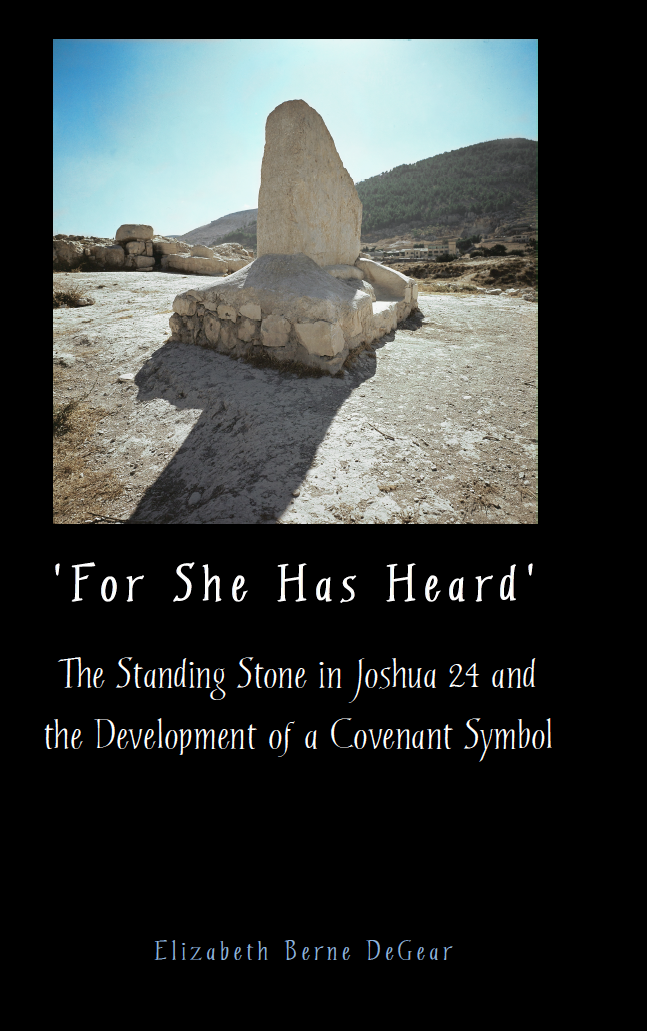
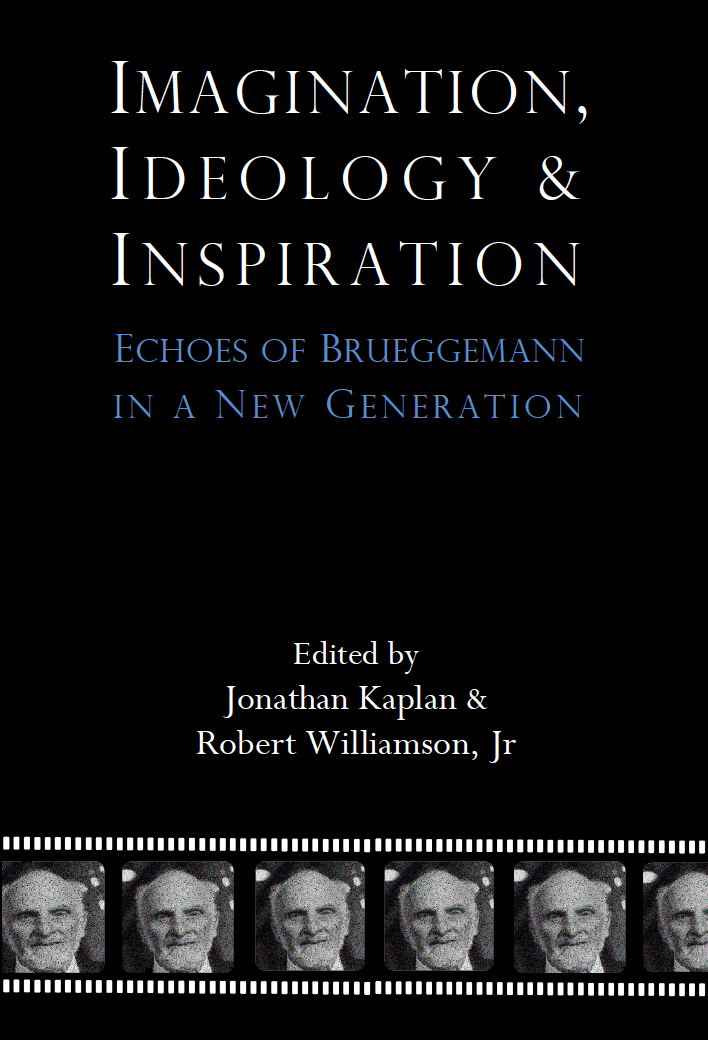



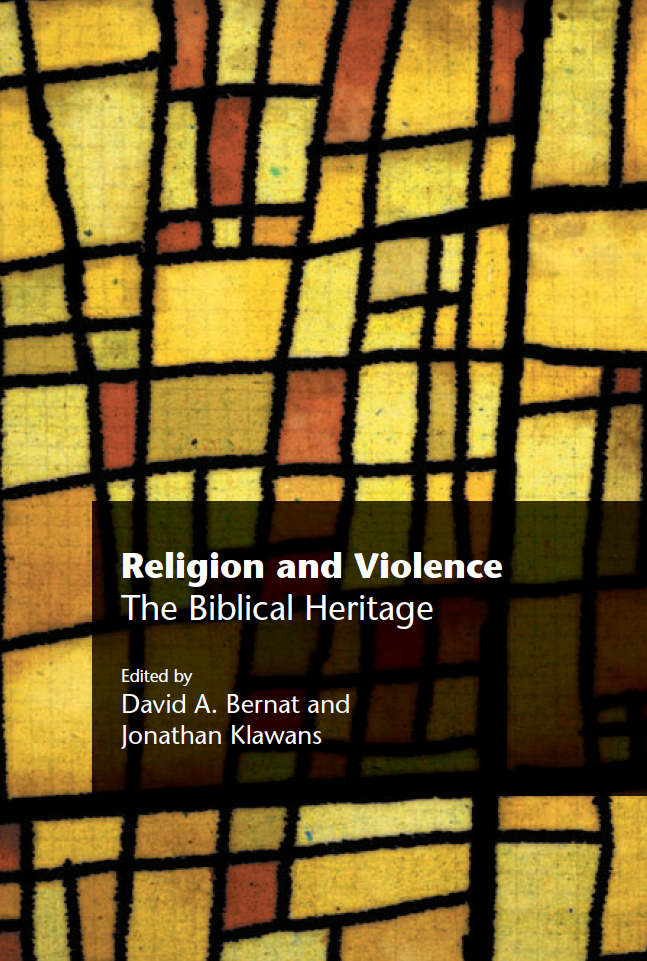
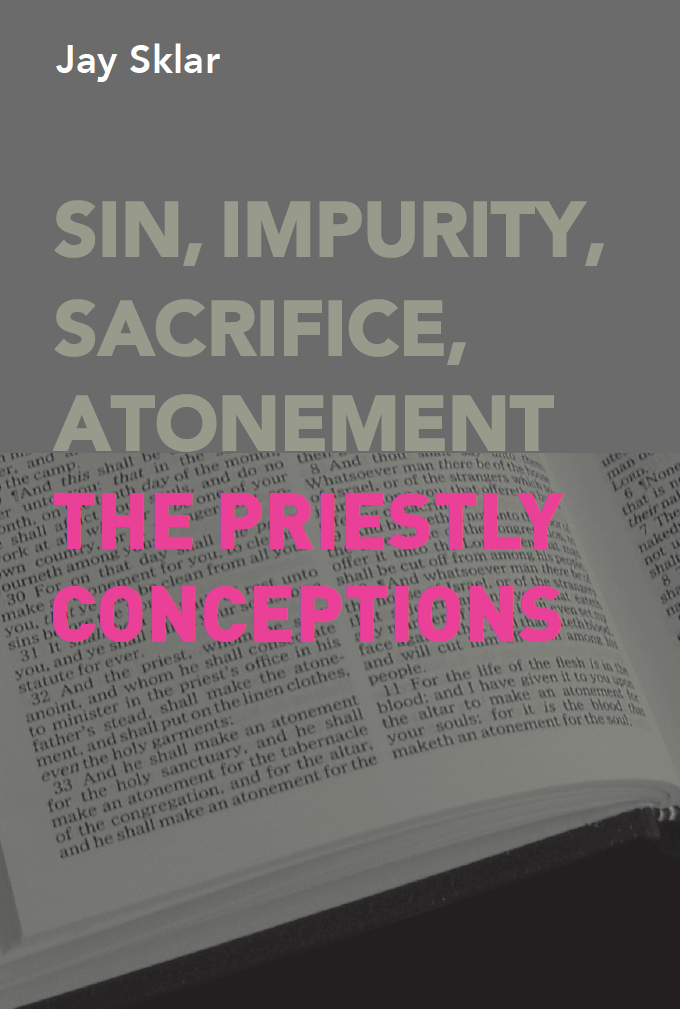
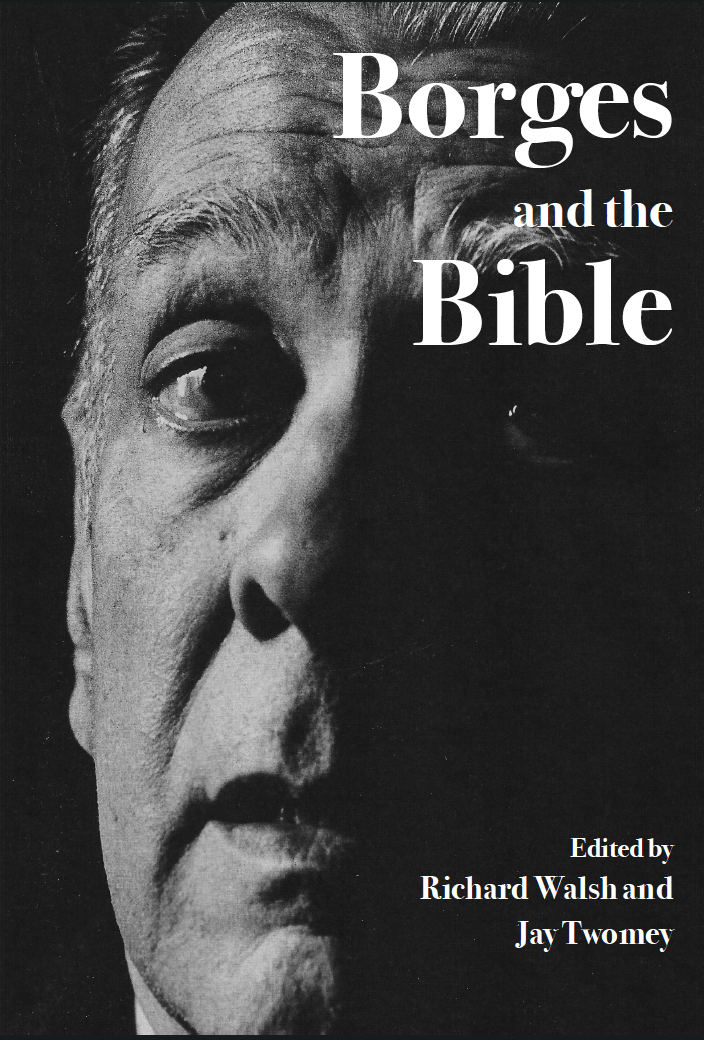
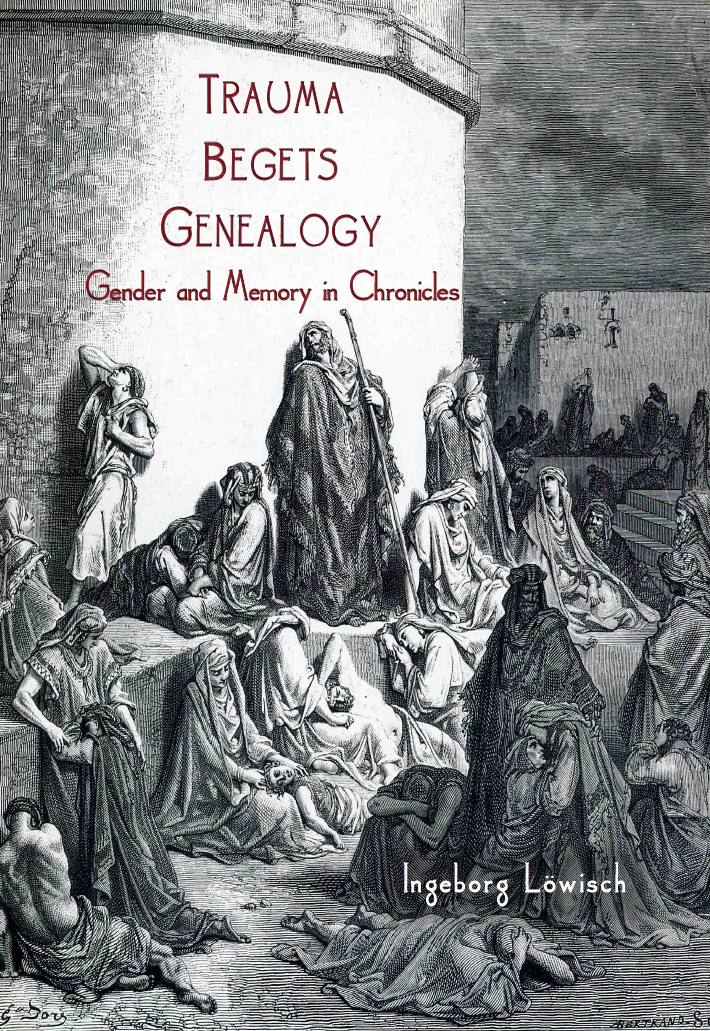

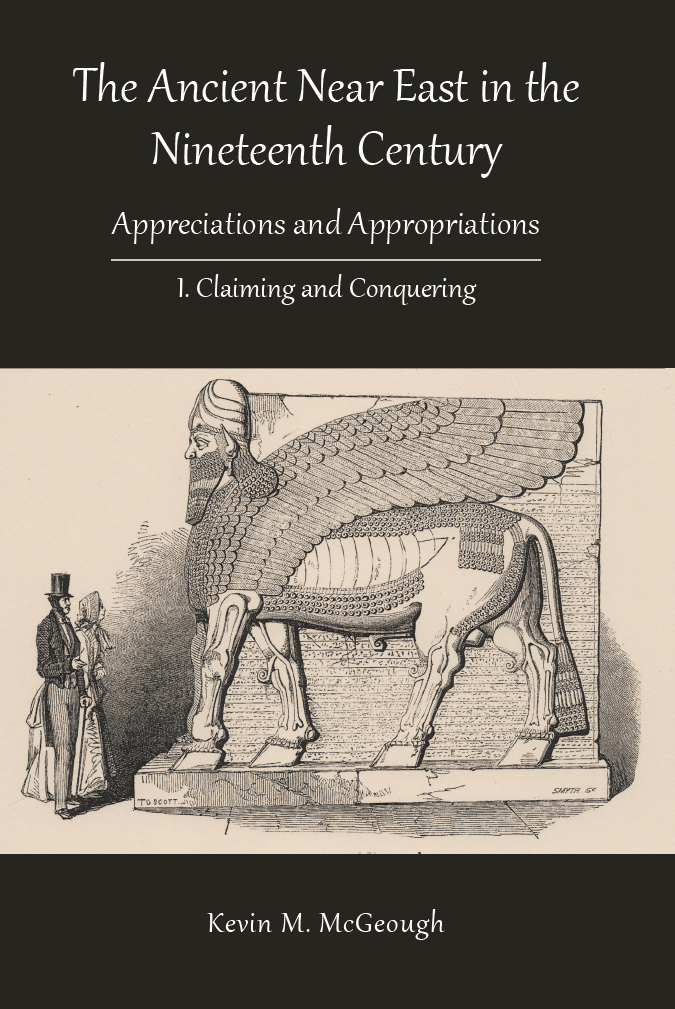
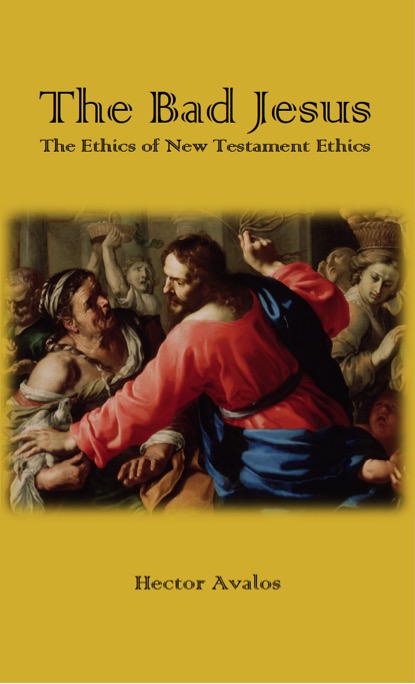
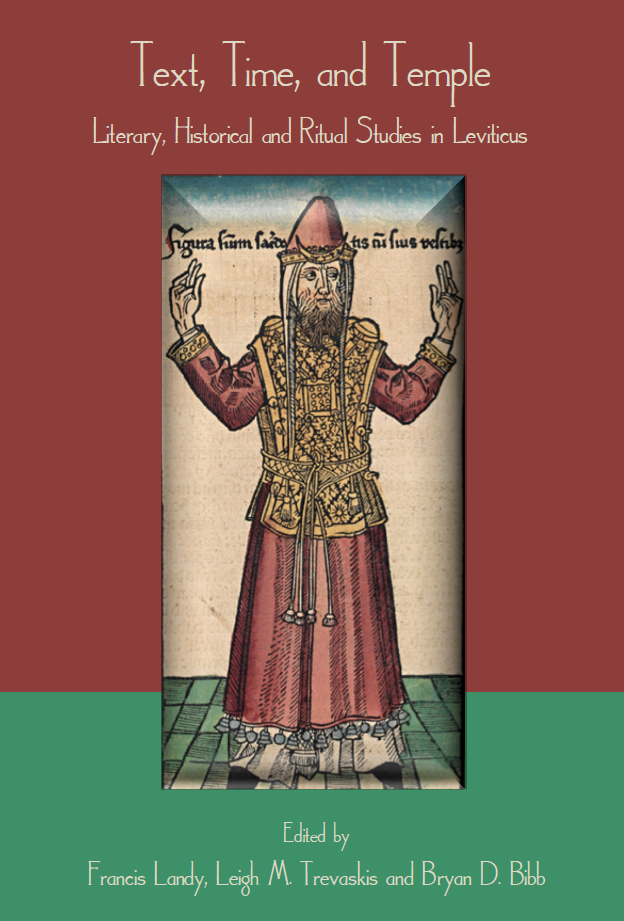
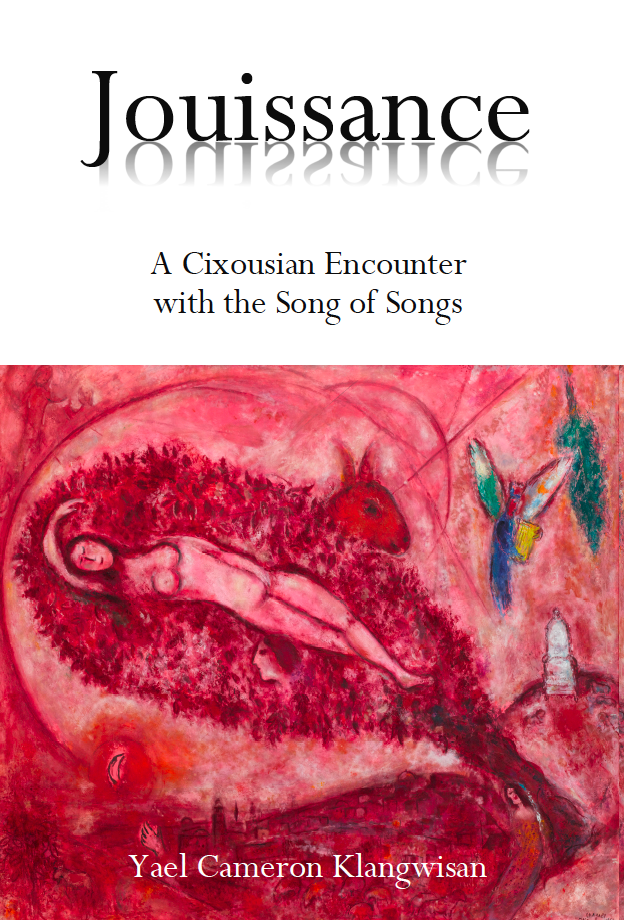

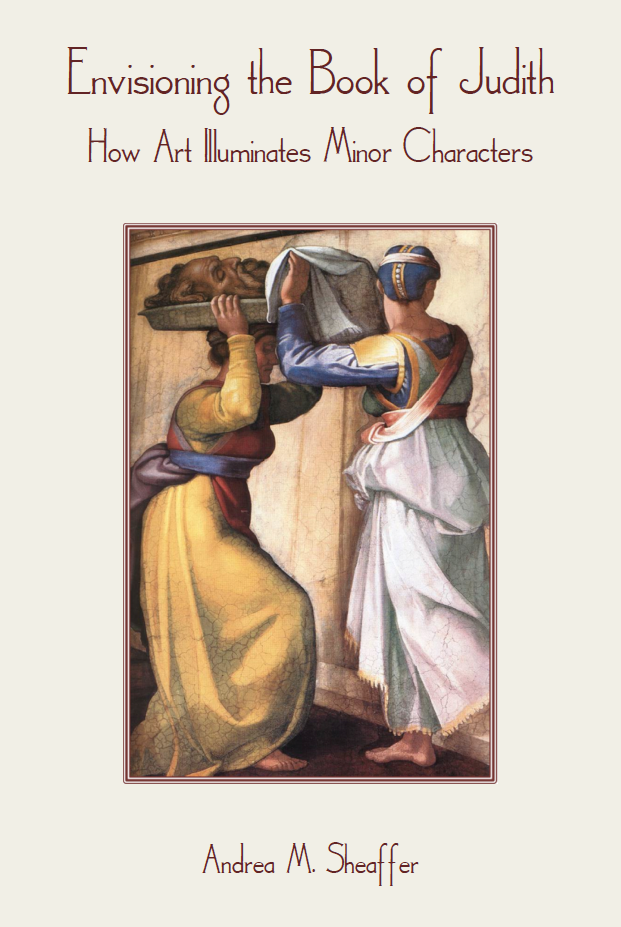
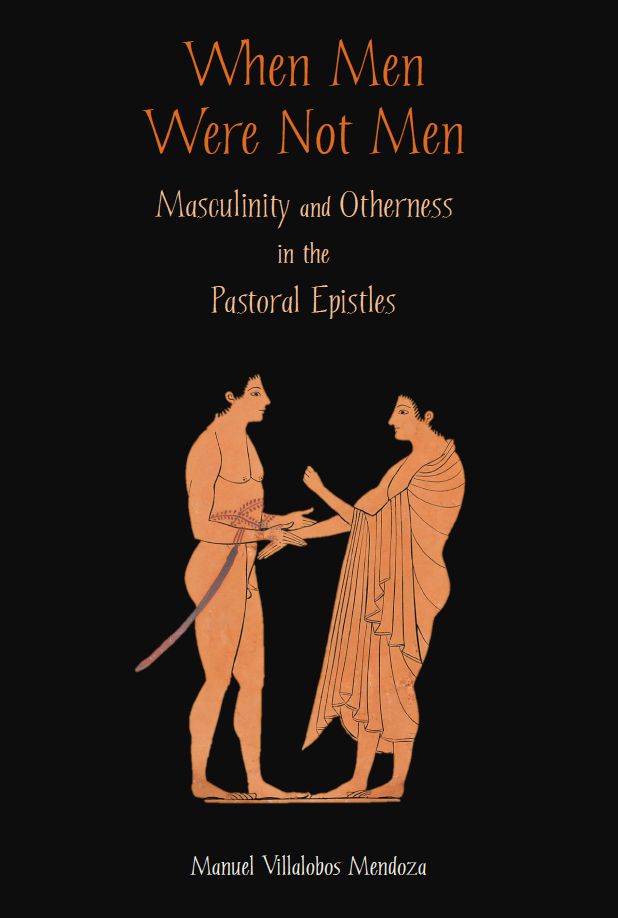
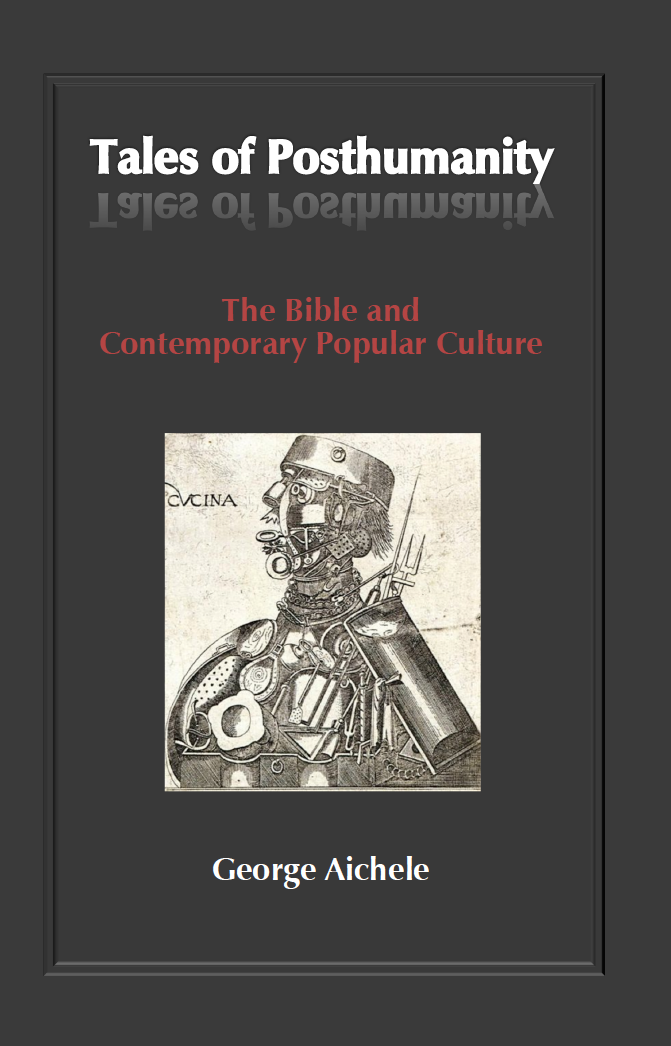
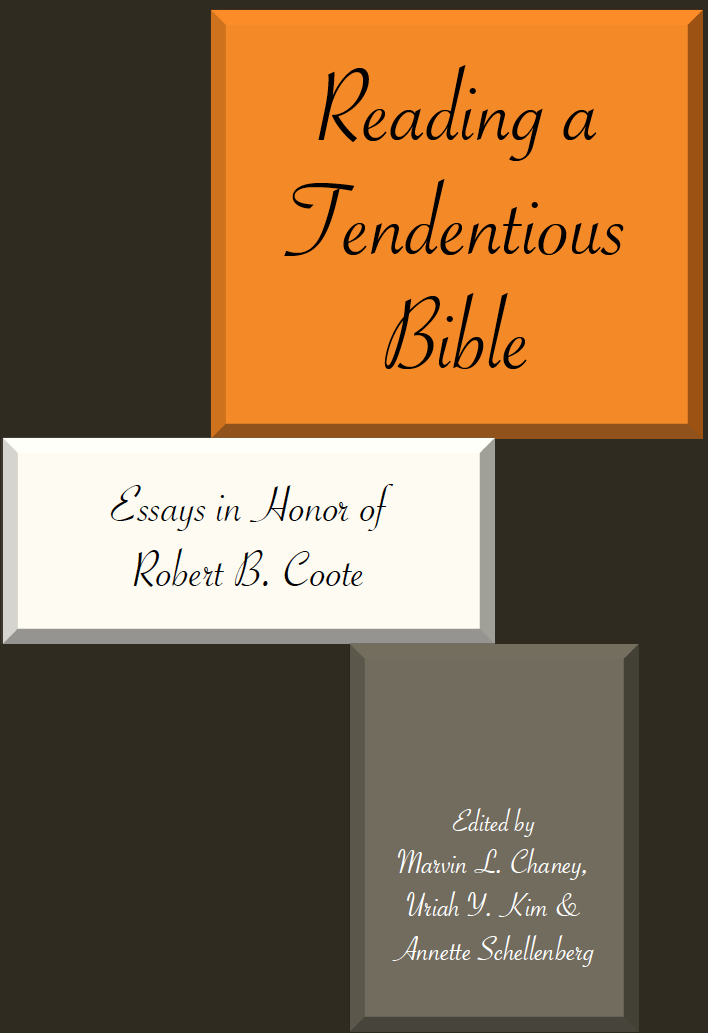

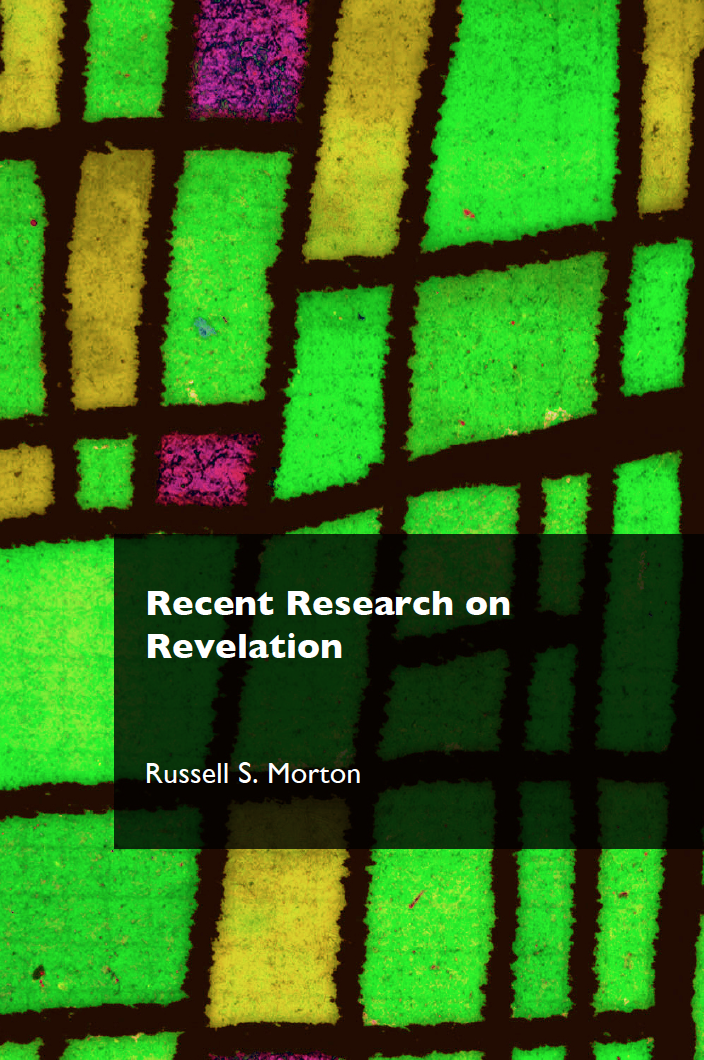

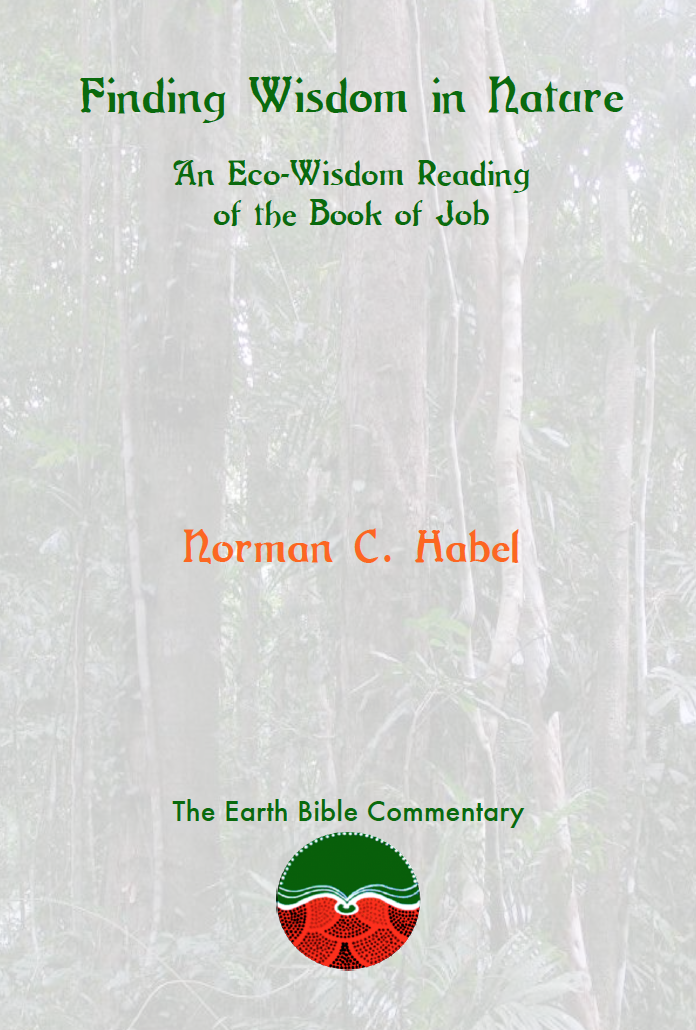
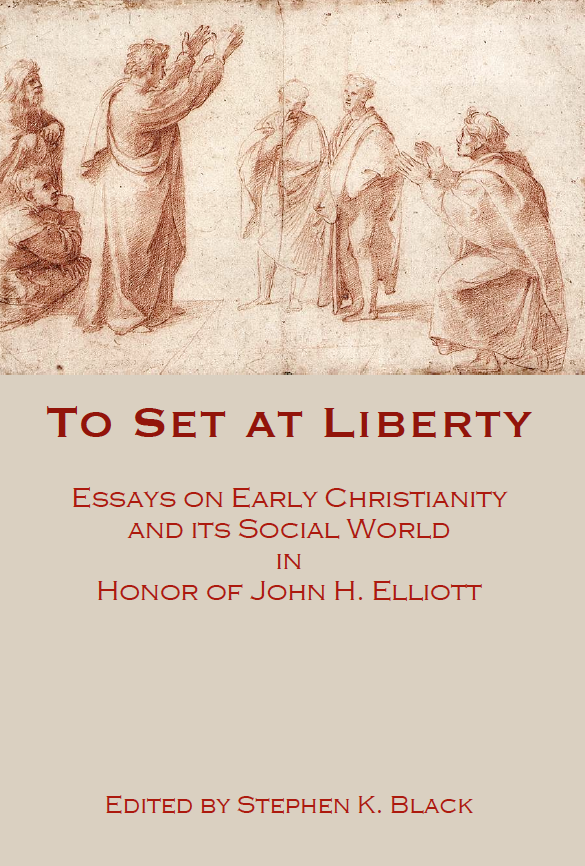
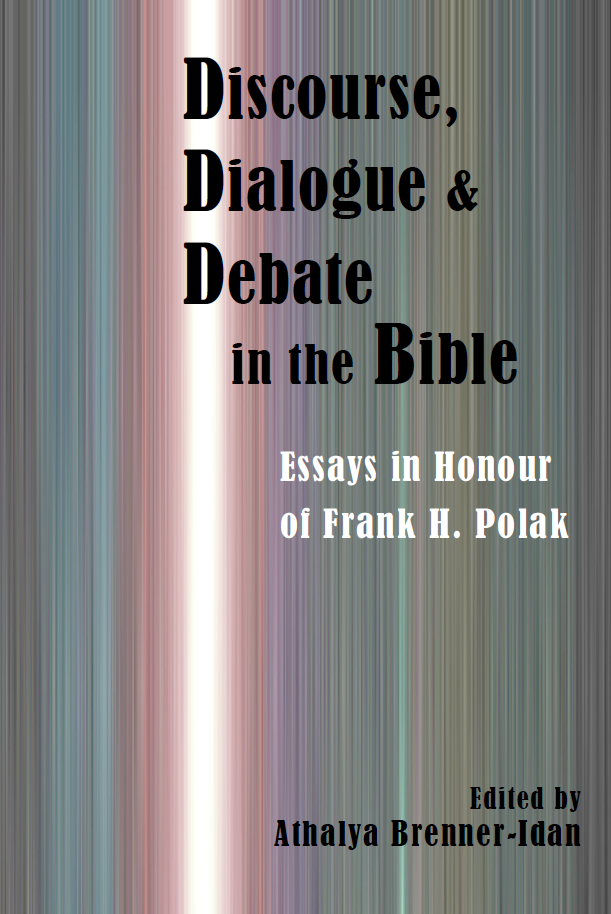

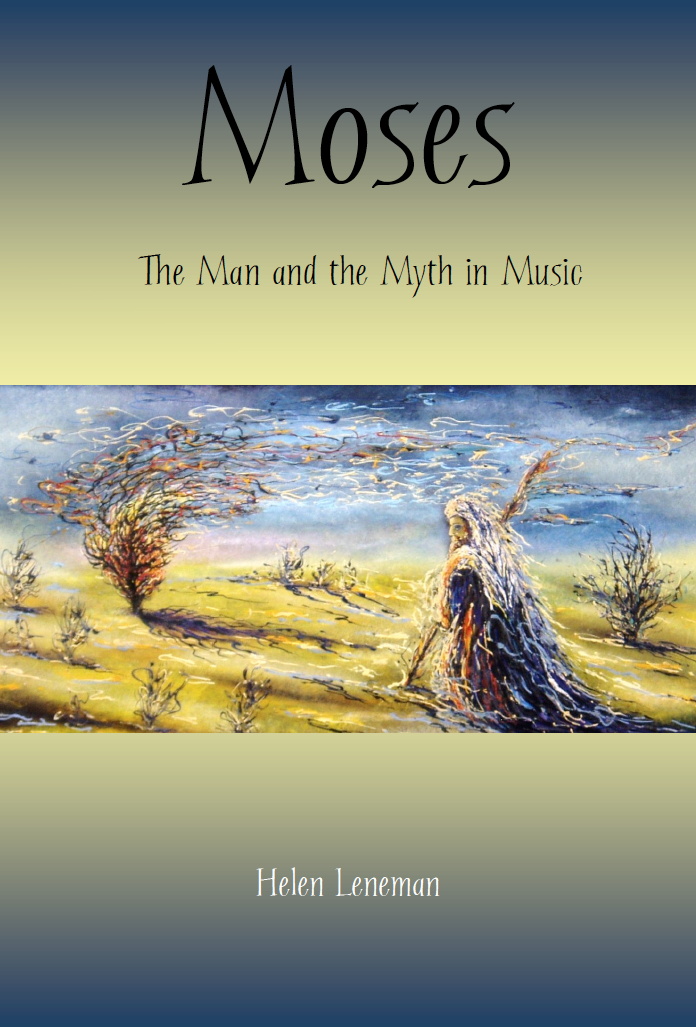


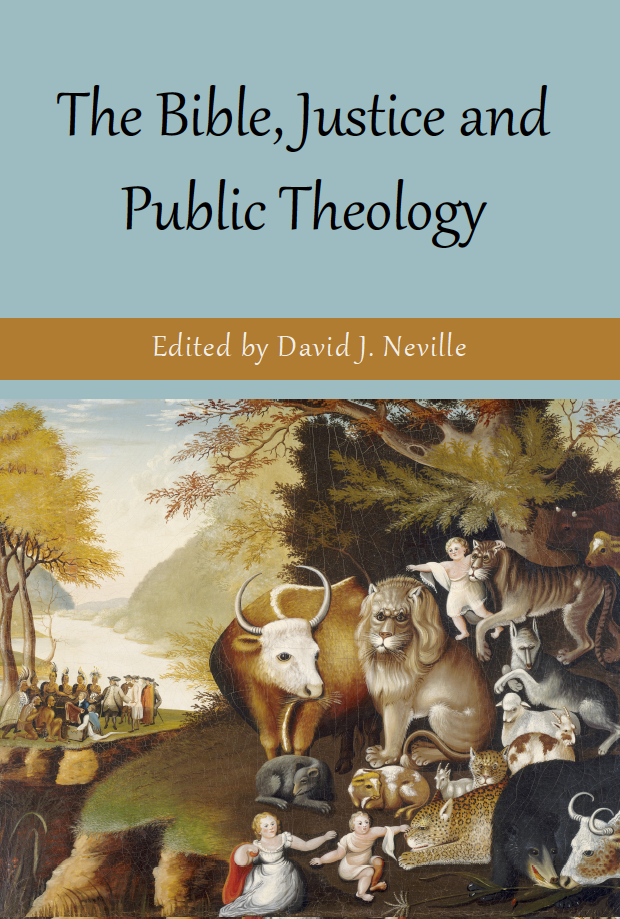
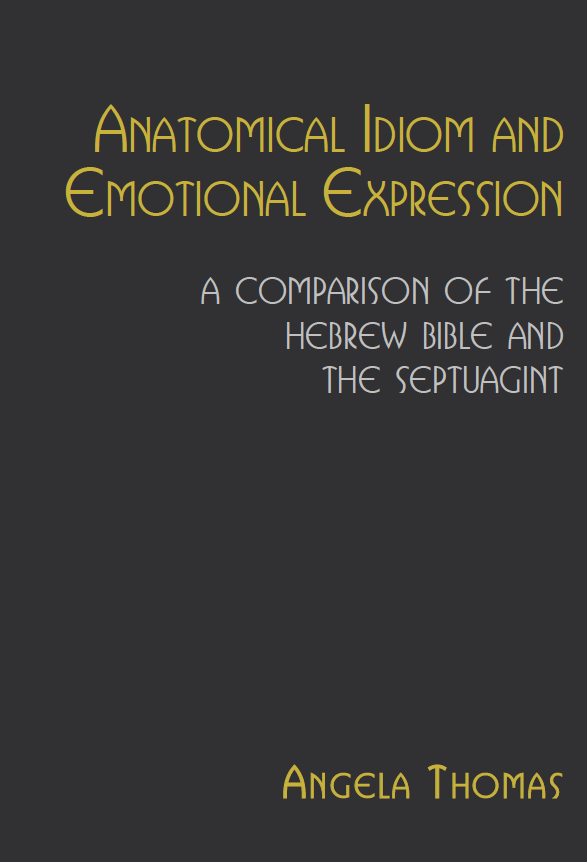
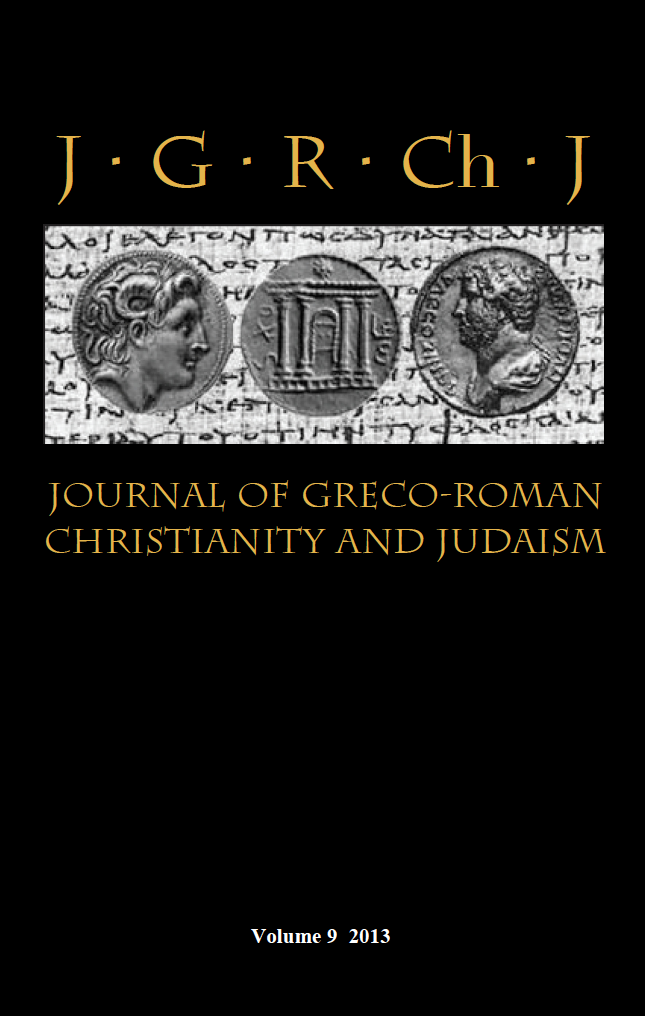
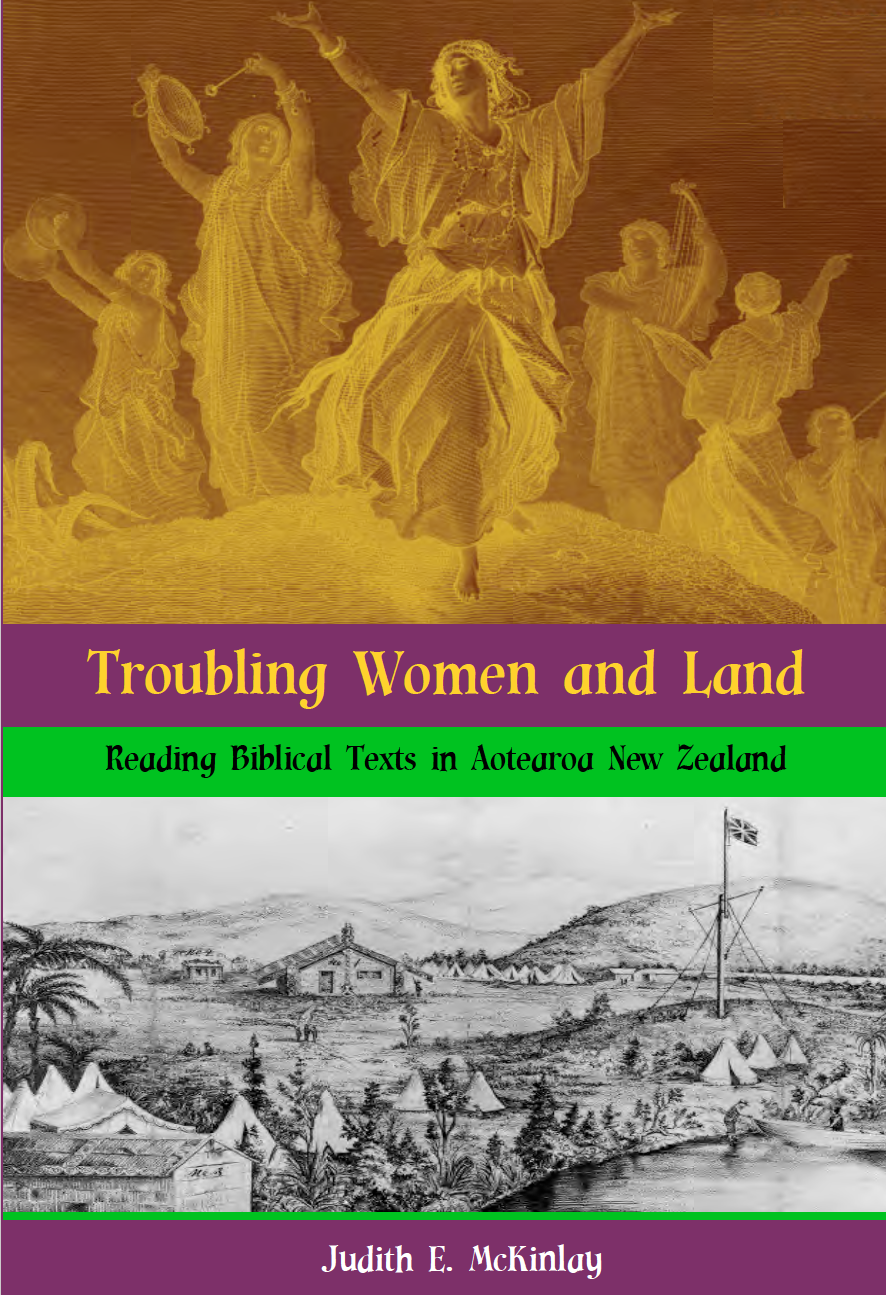
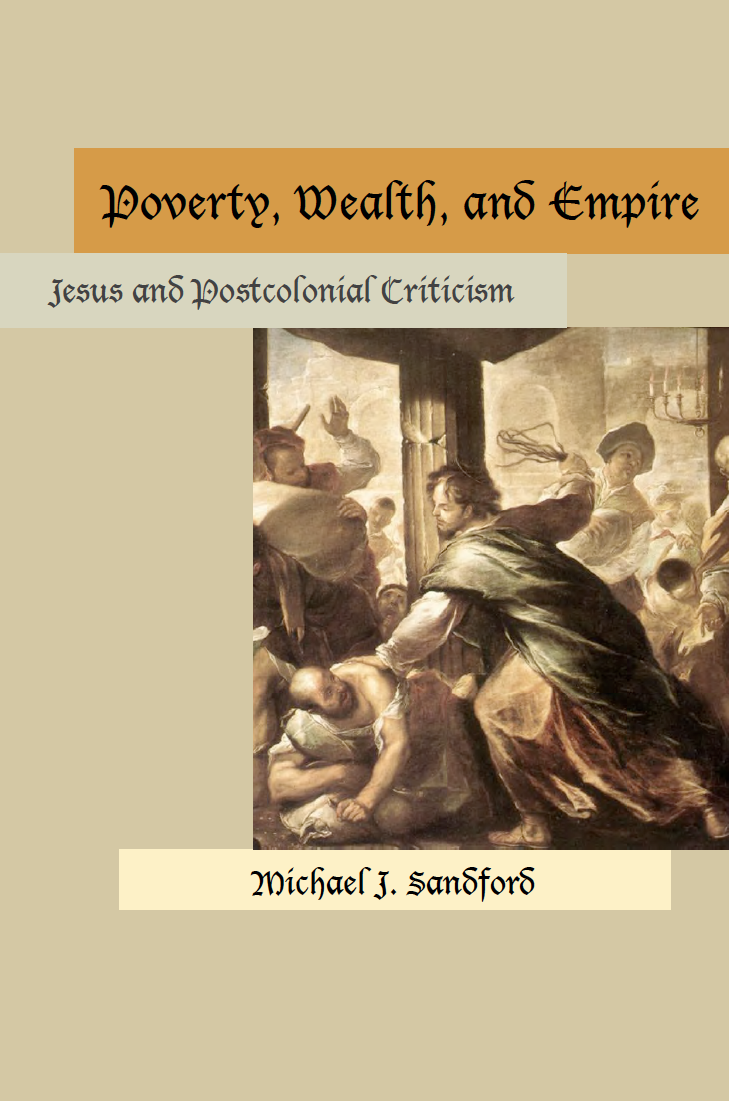
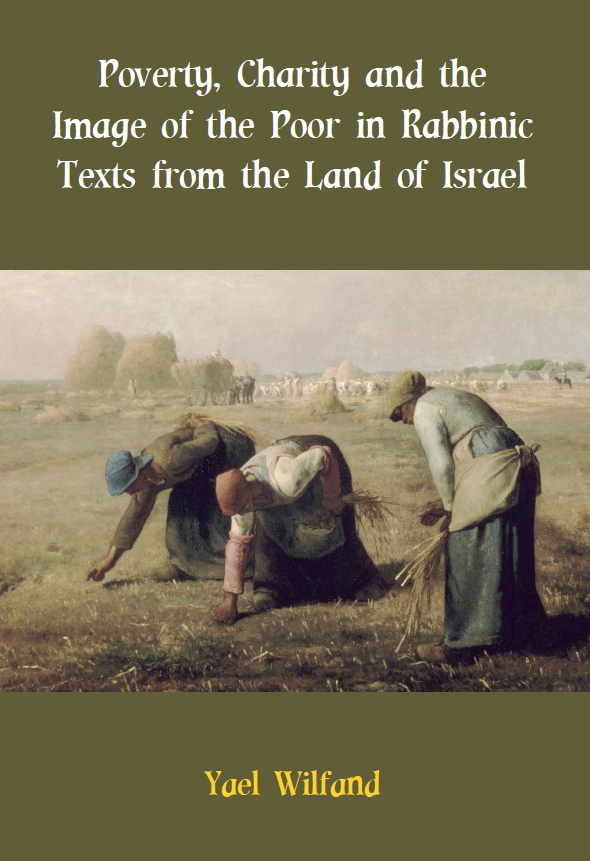
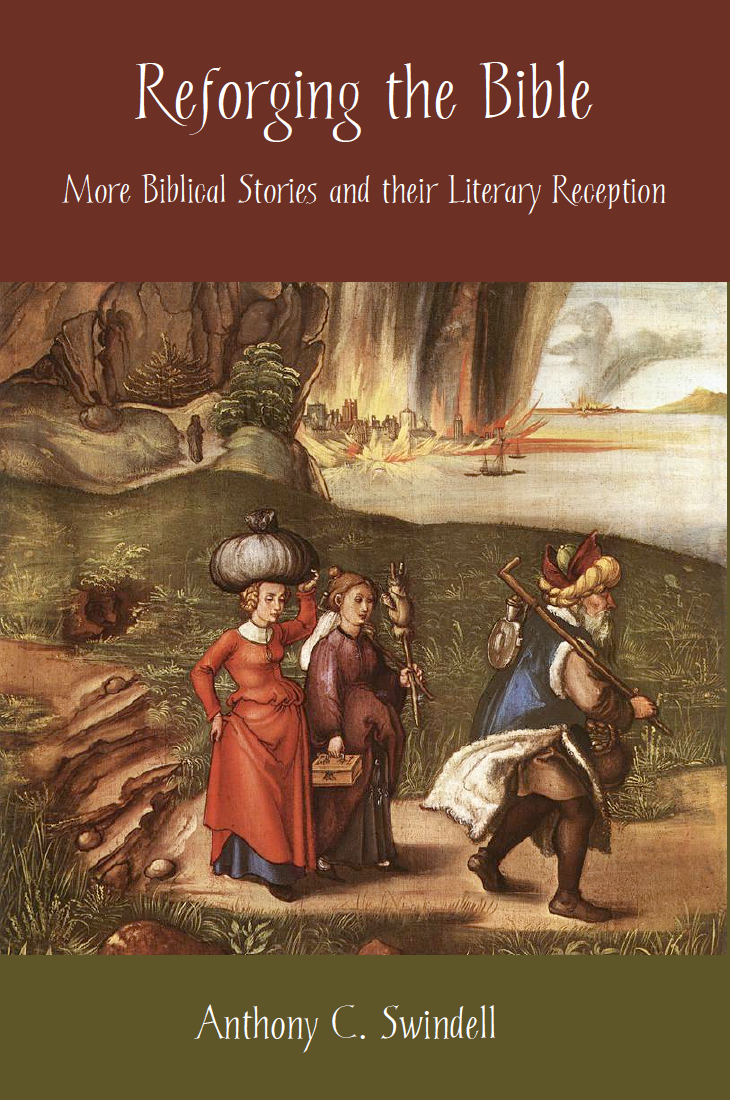
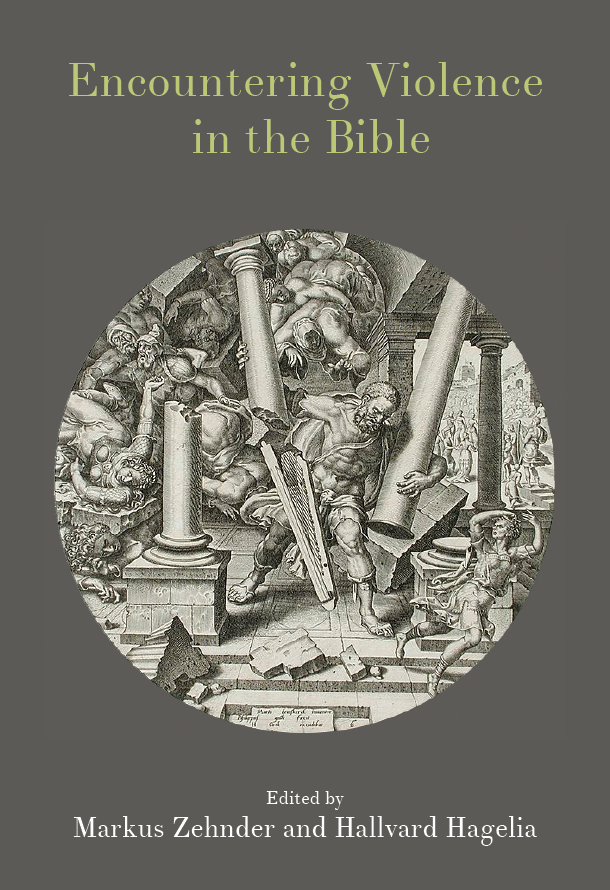
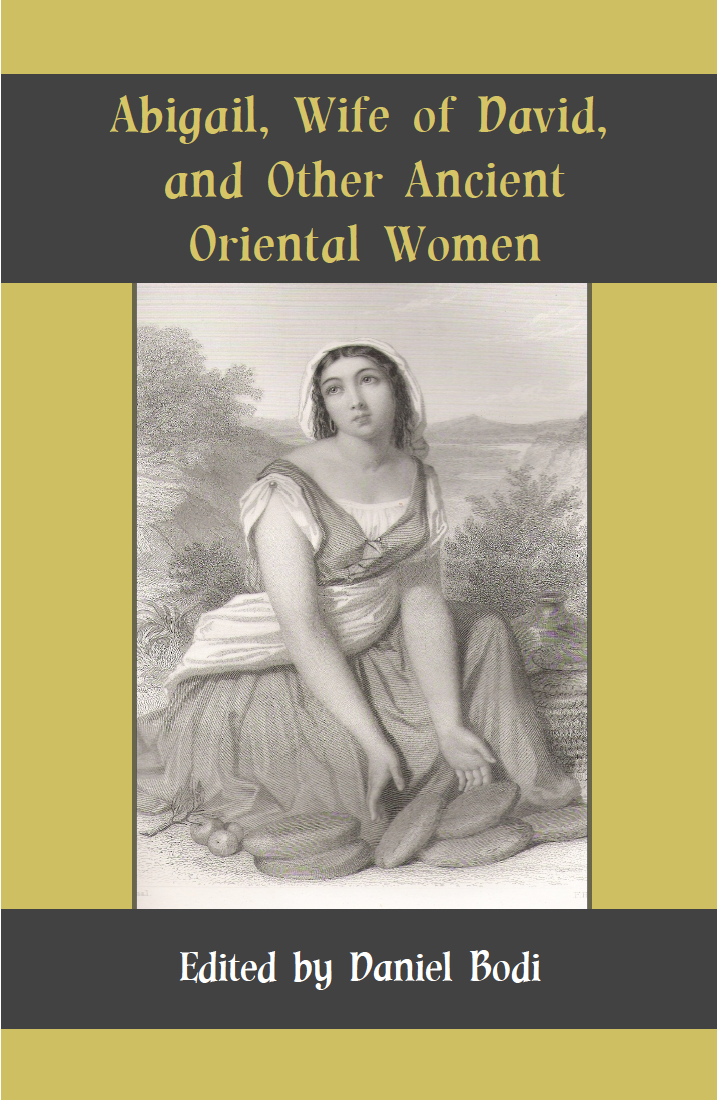
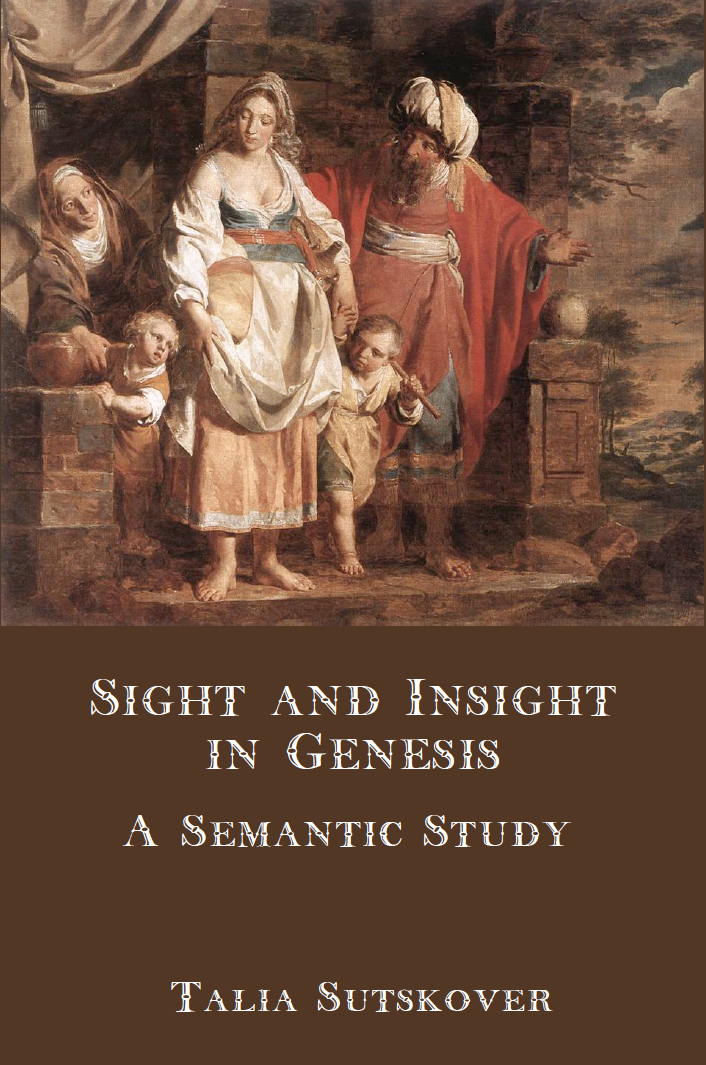


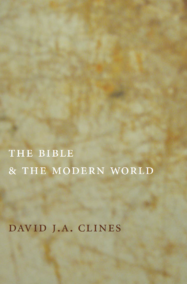
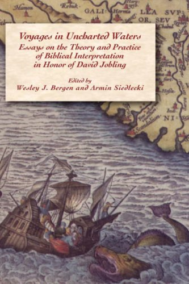

The Book of Job
The Book of Job